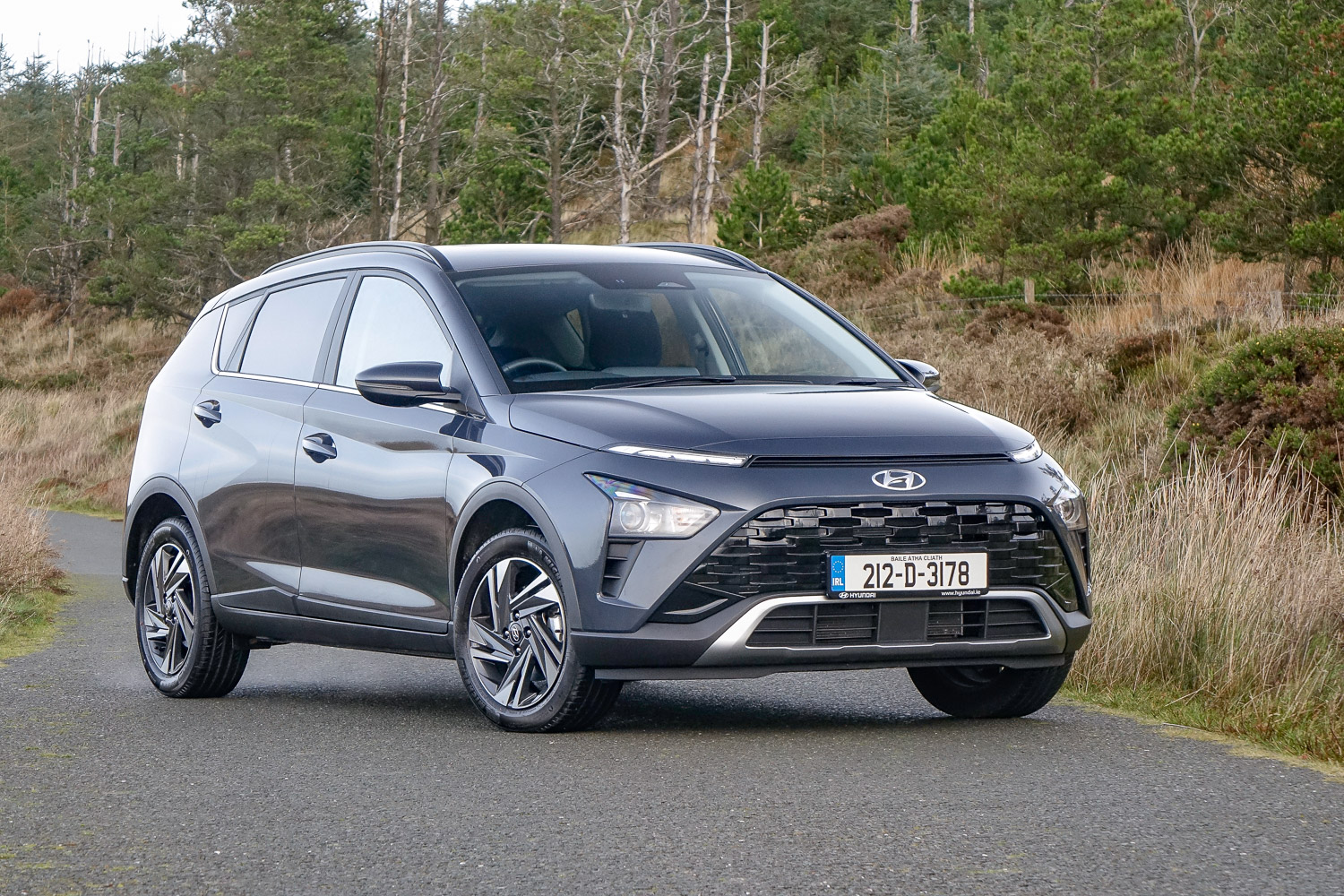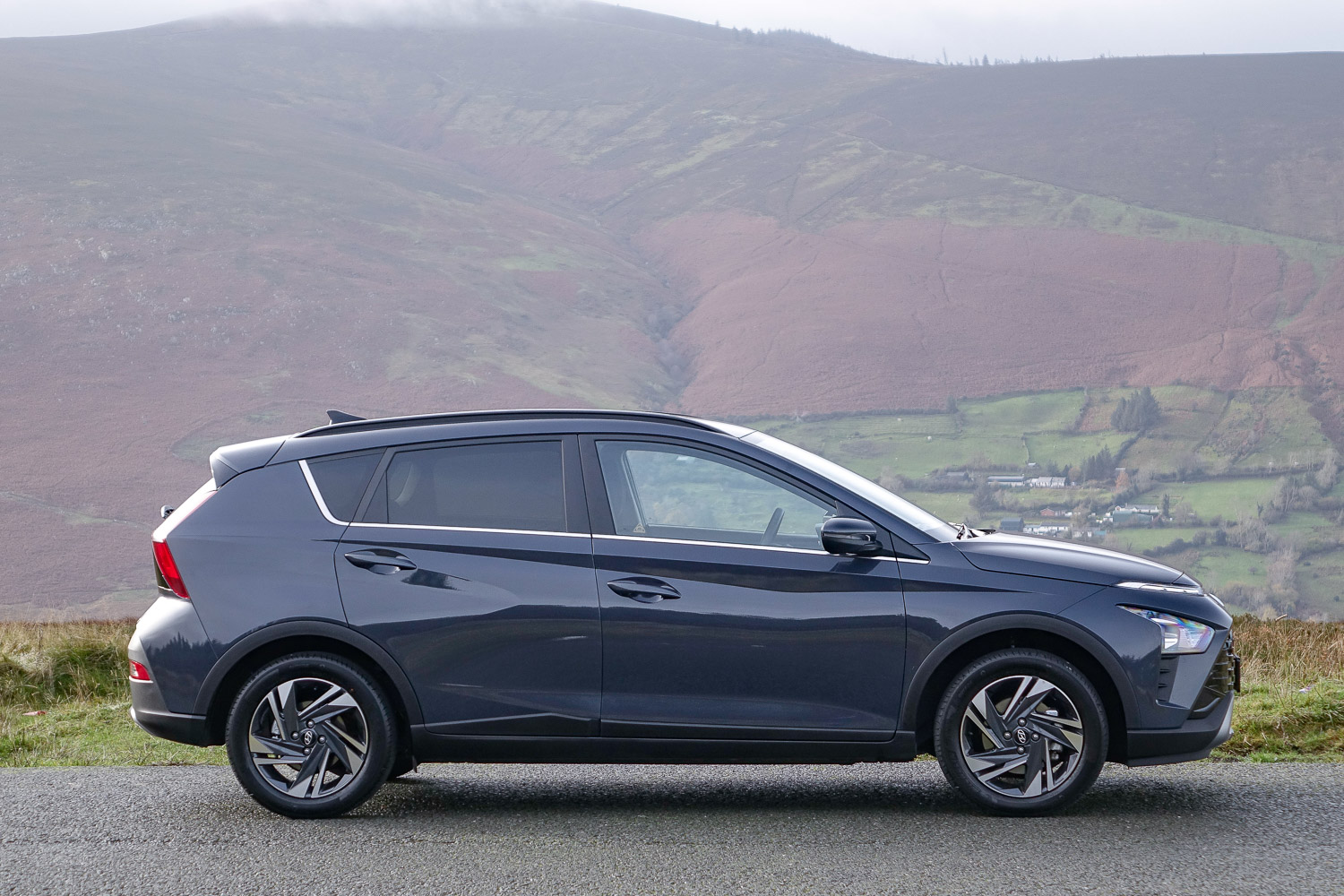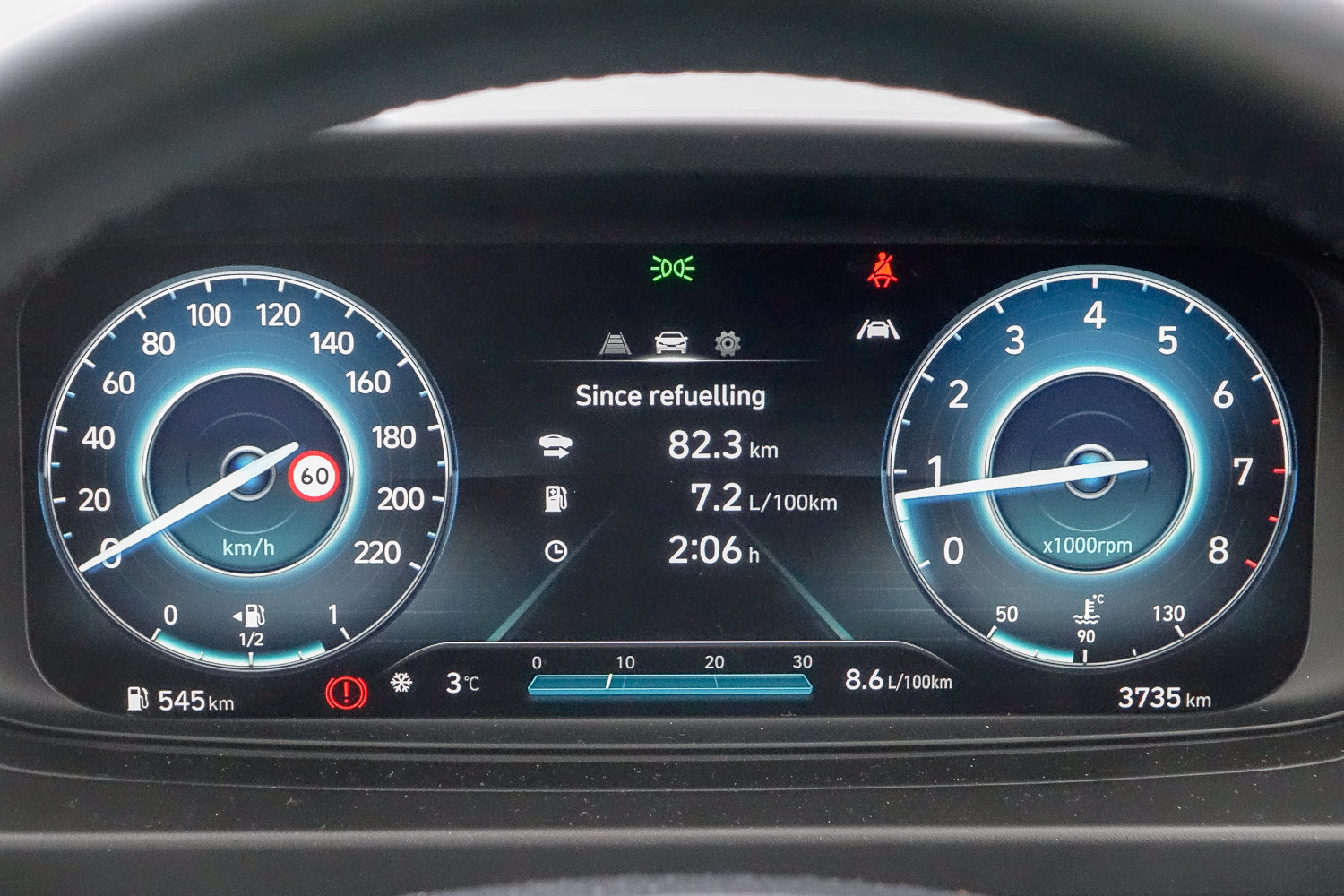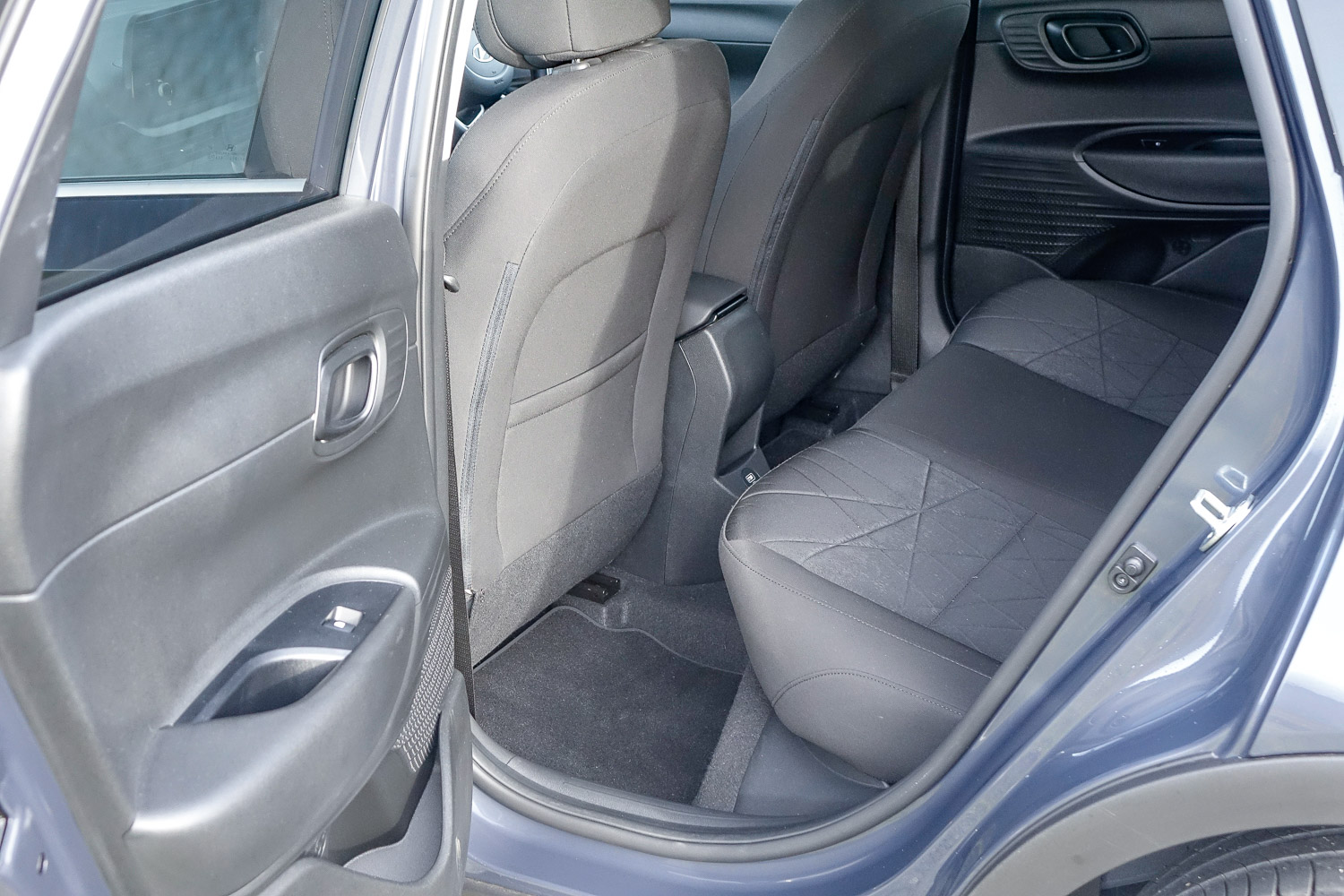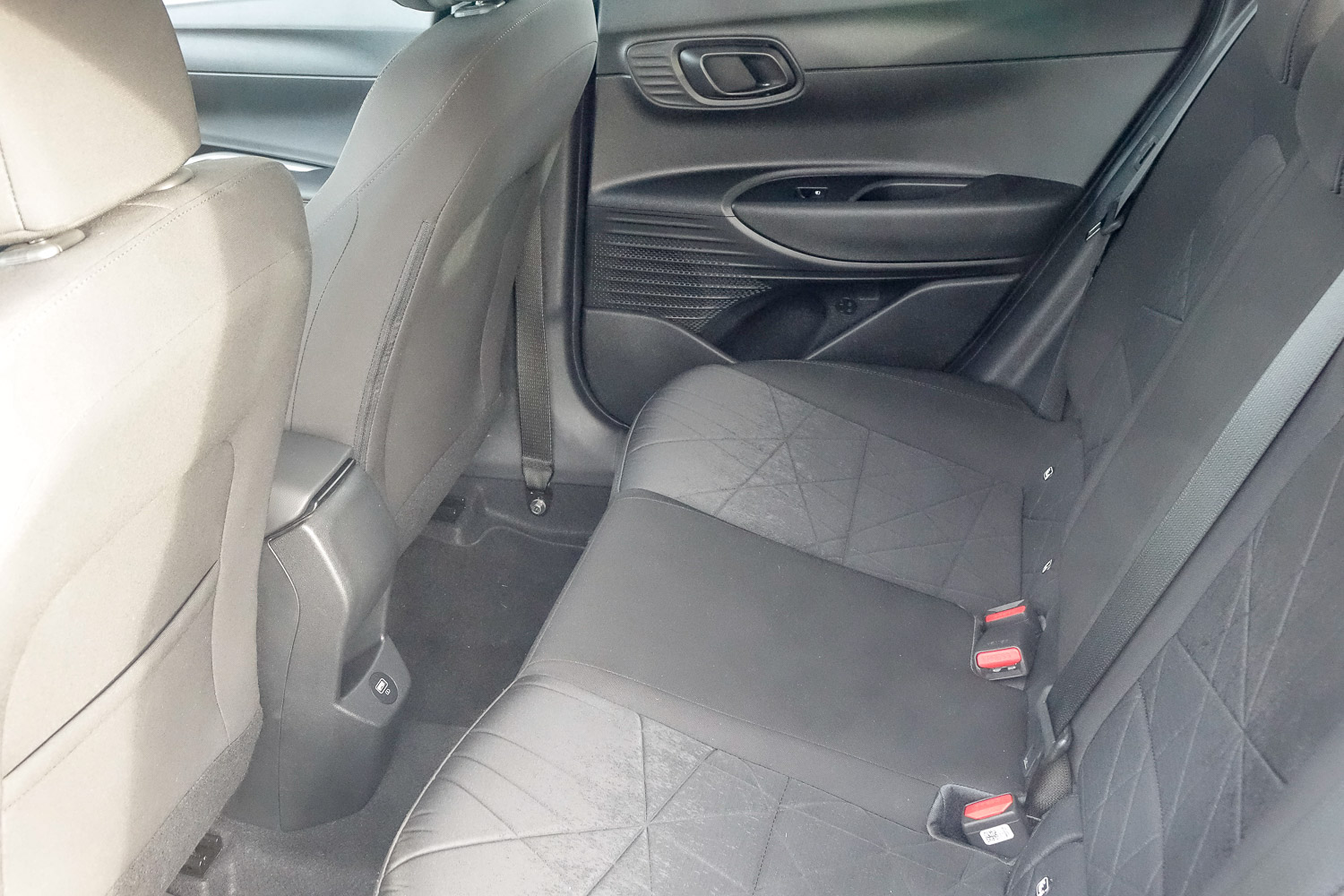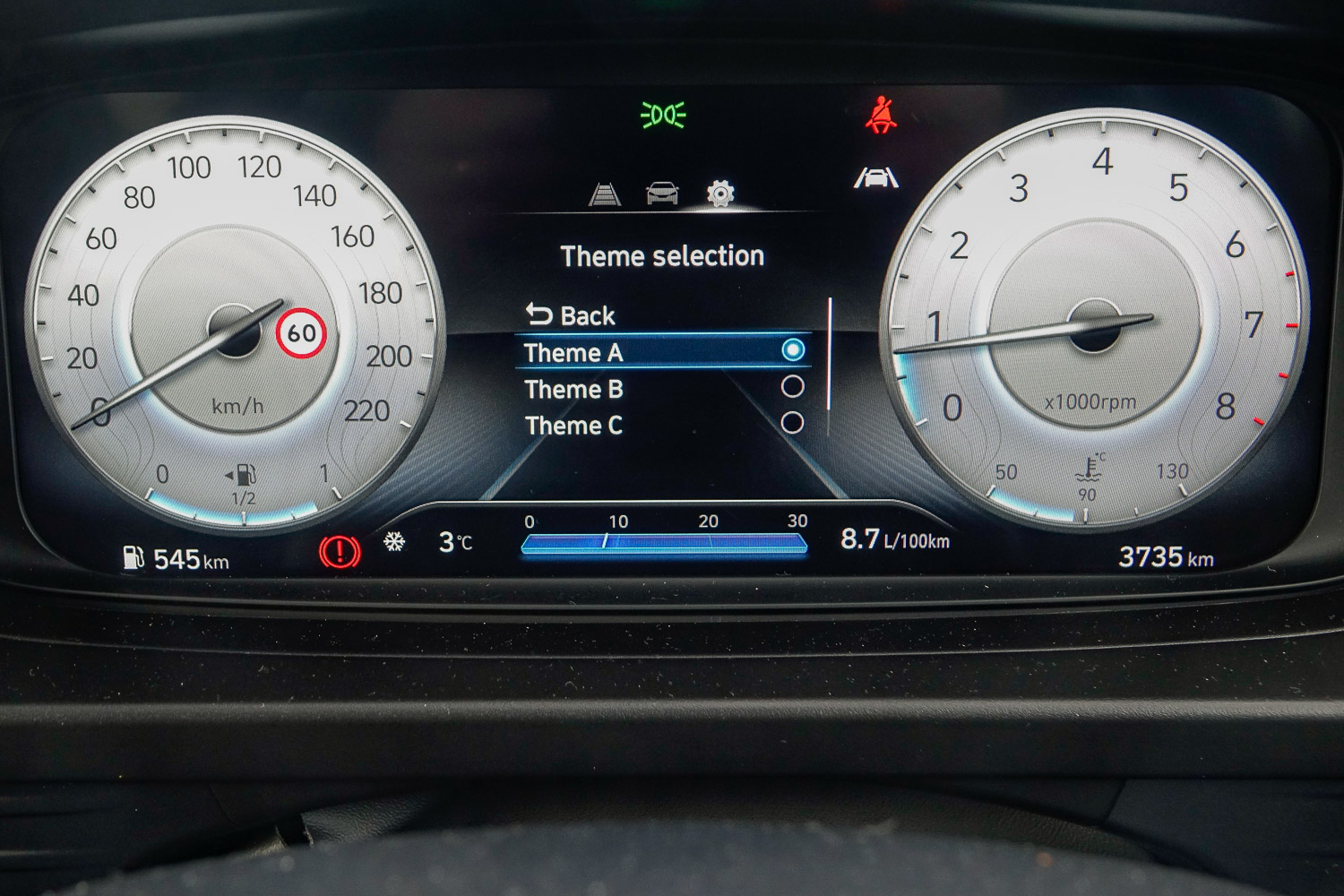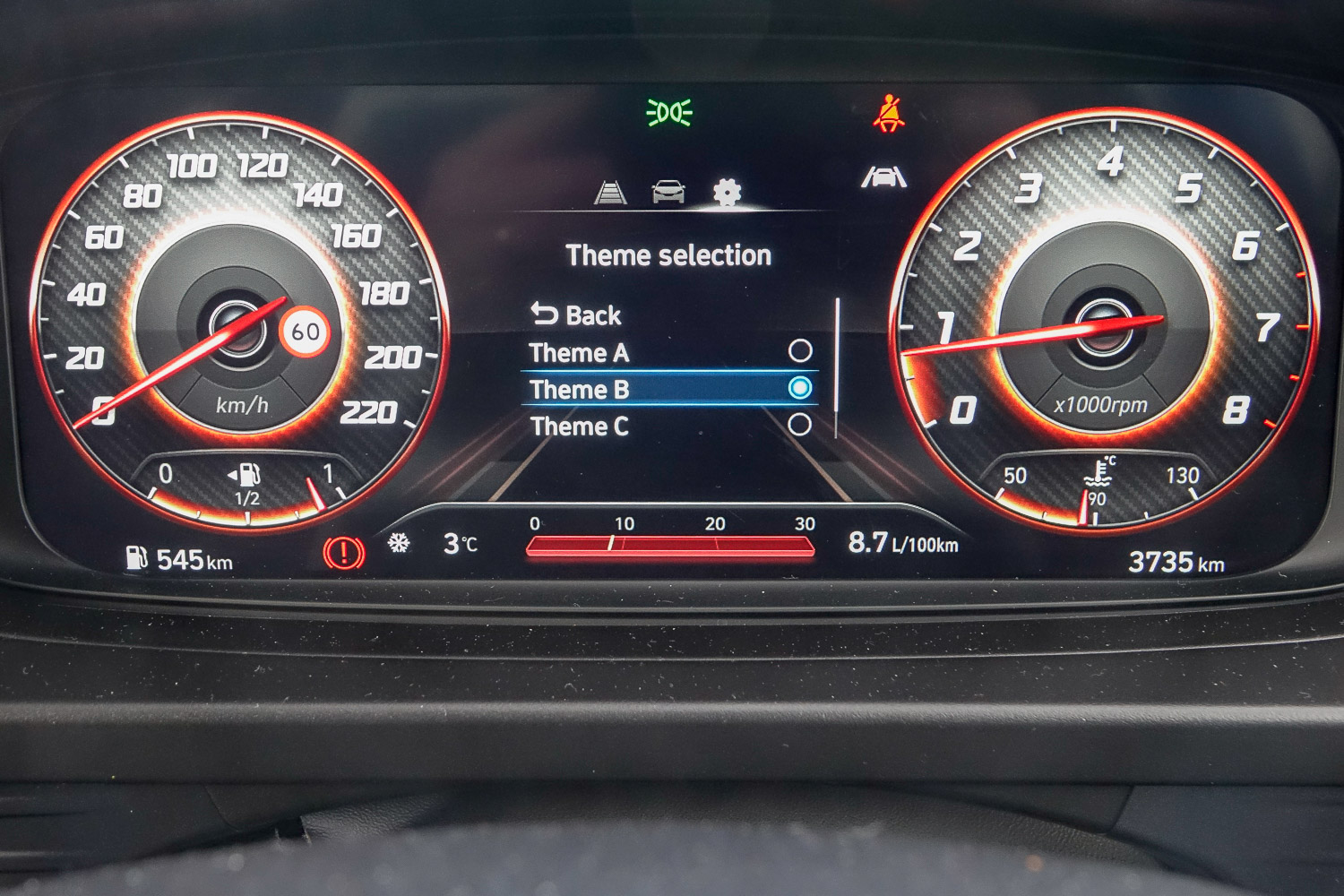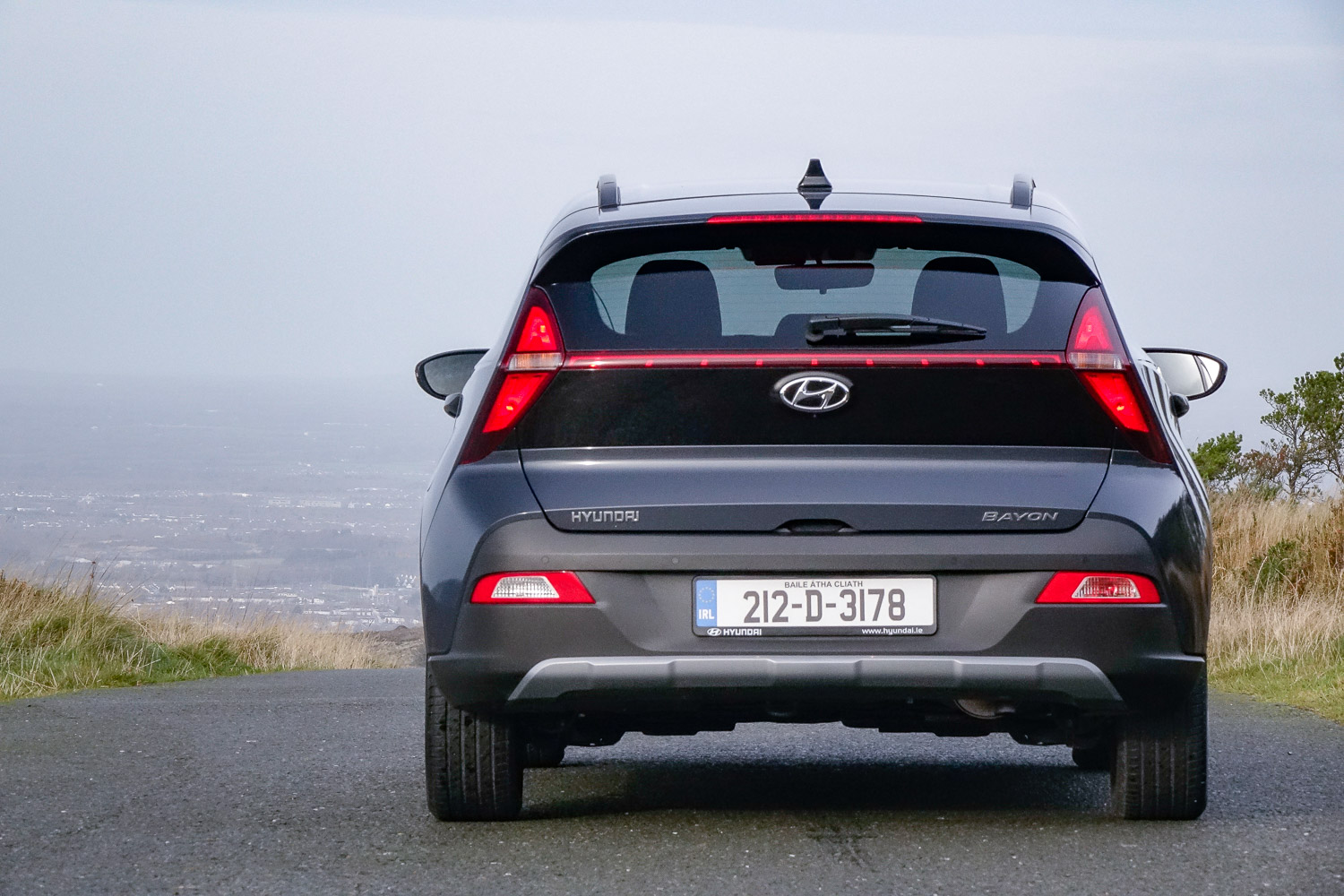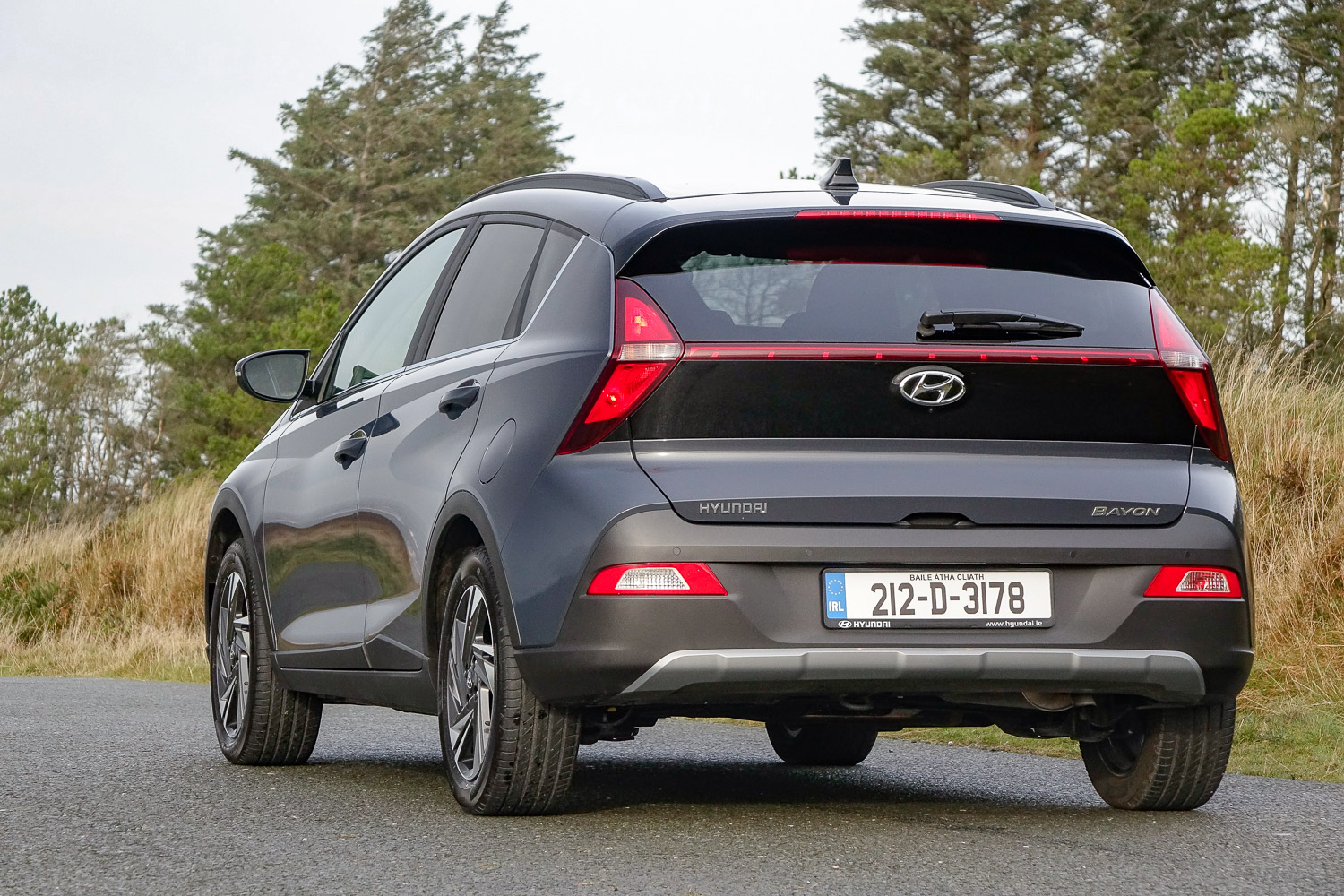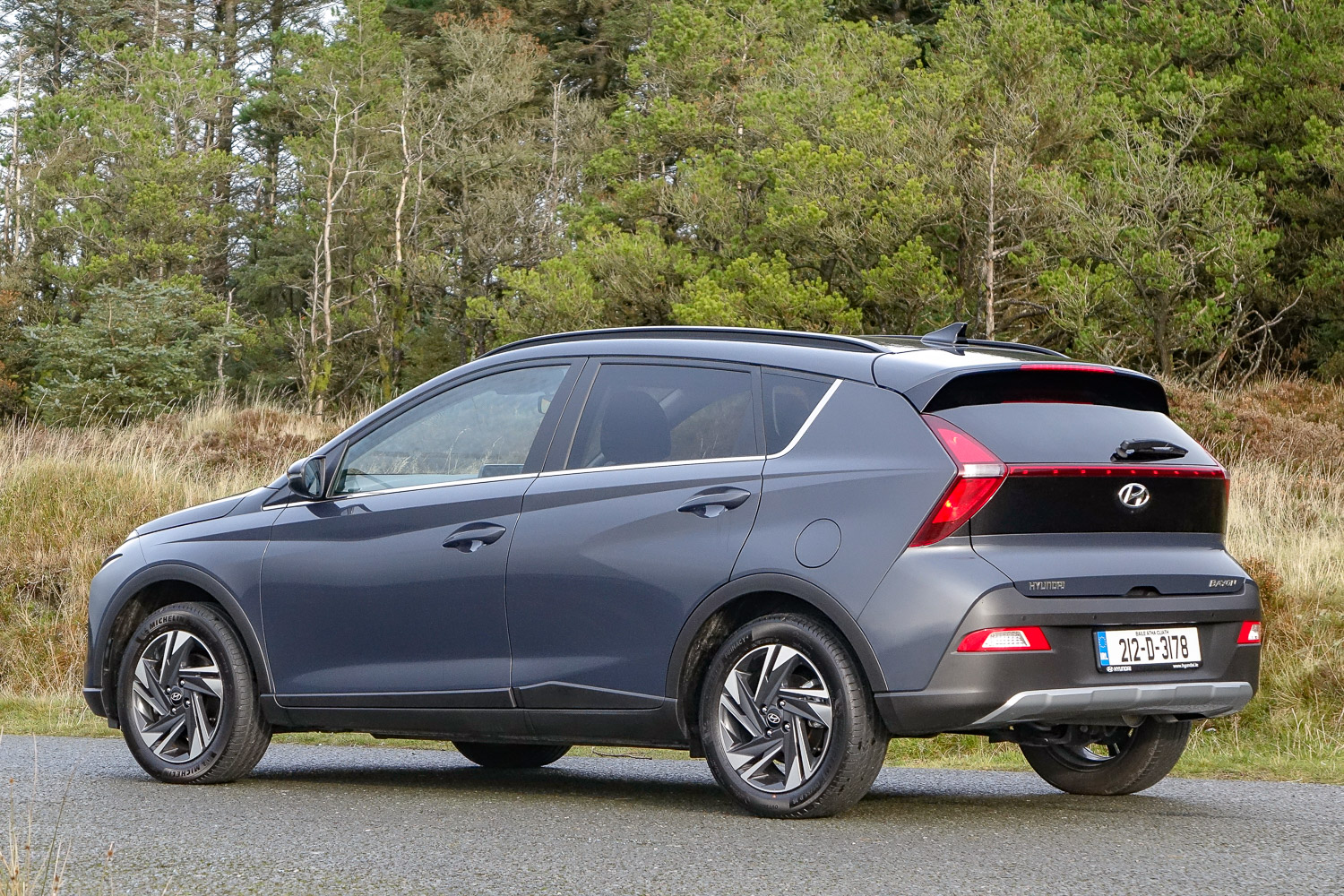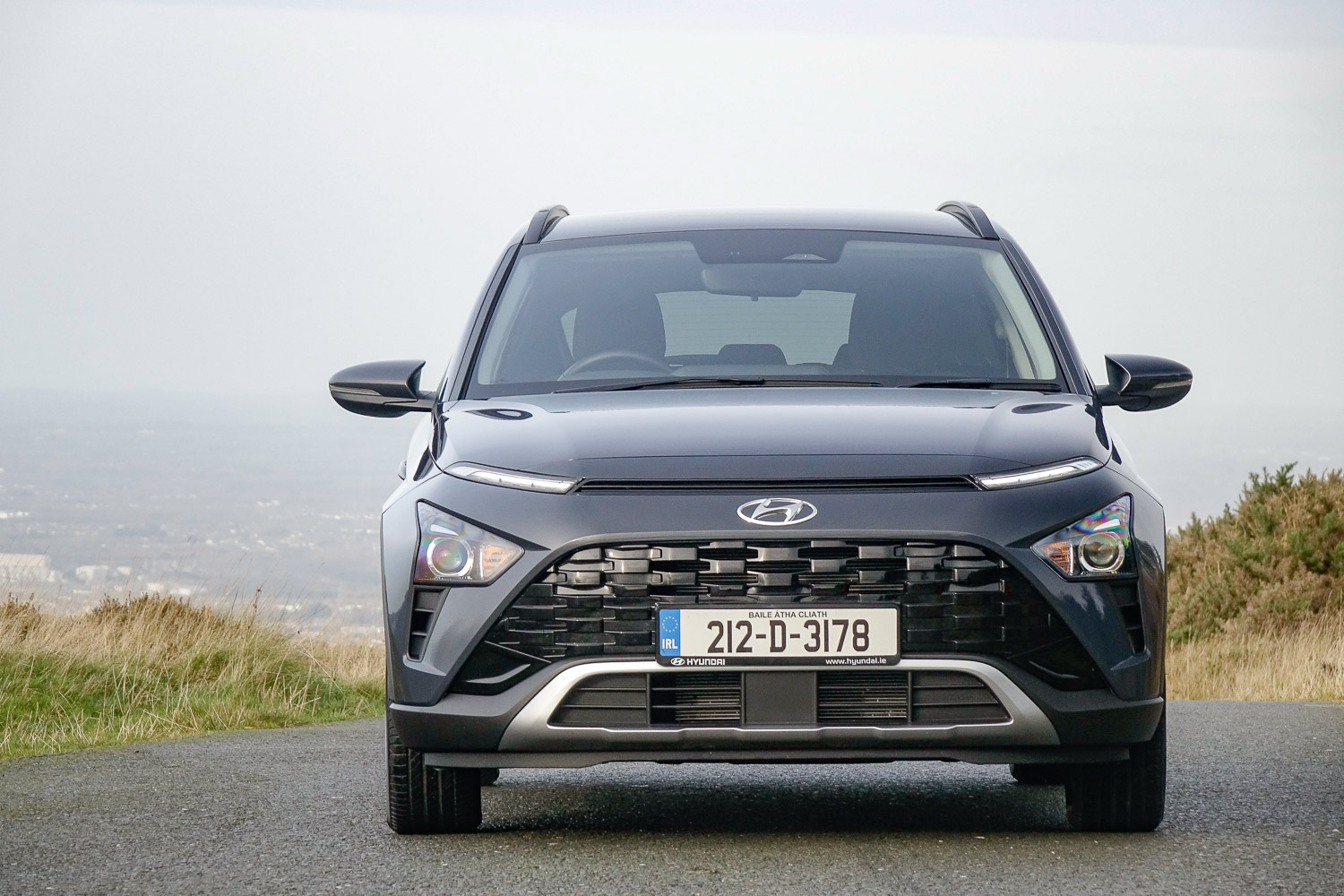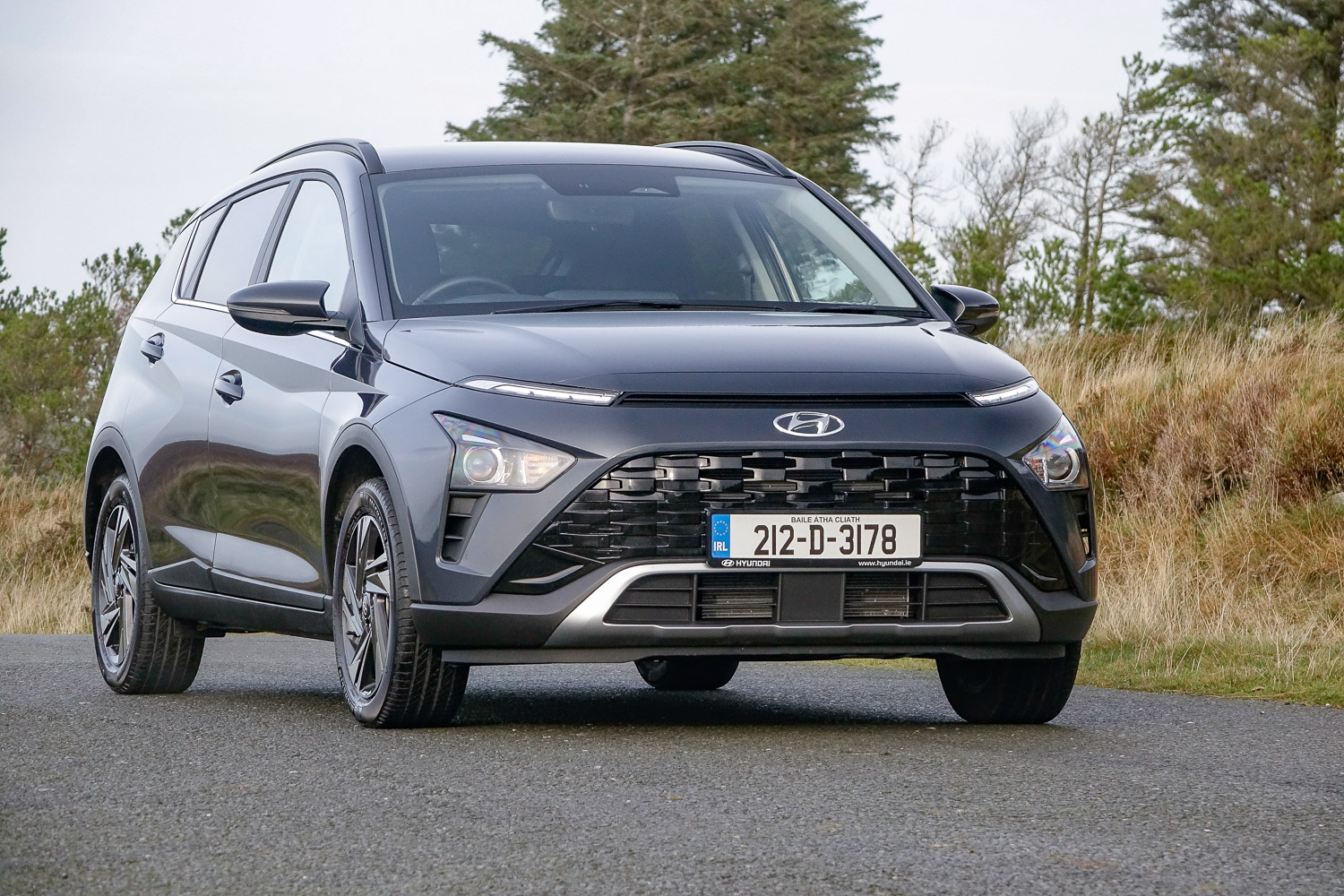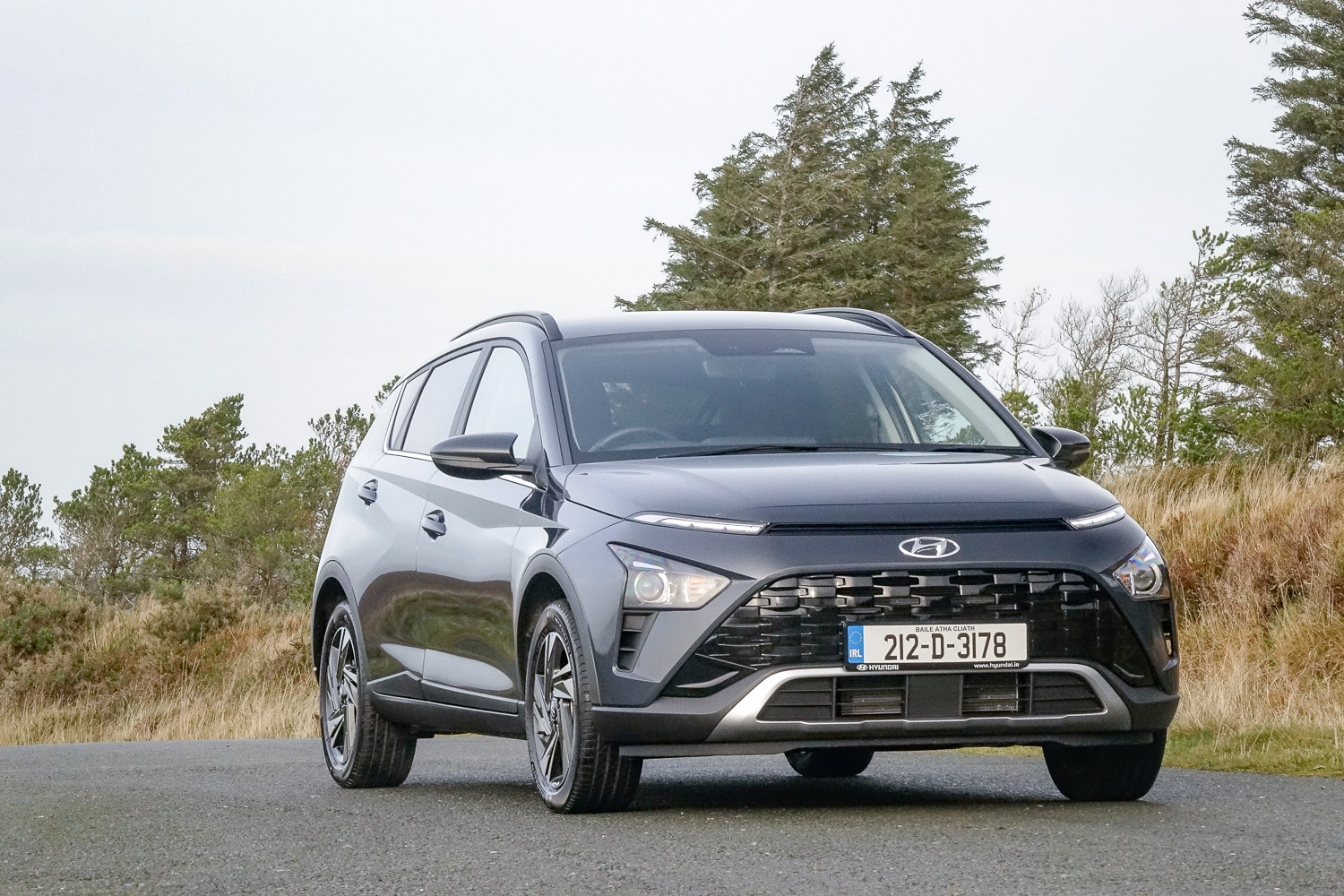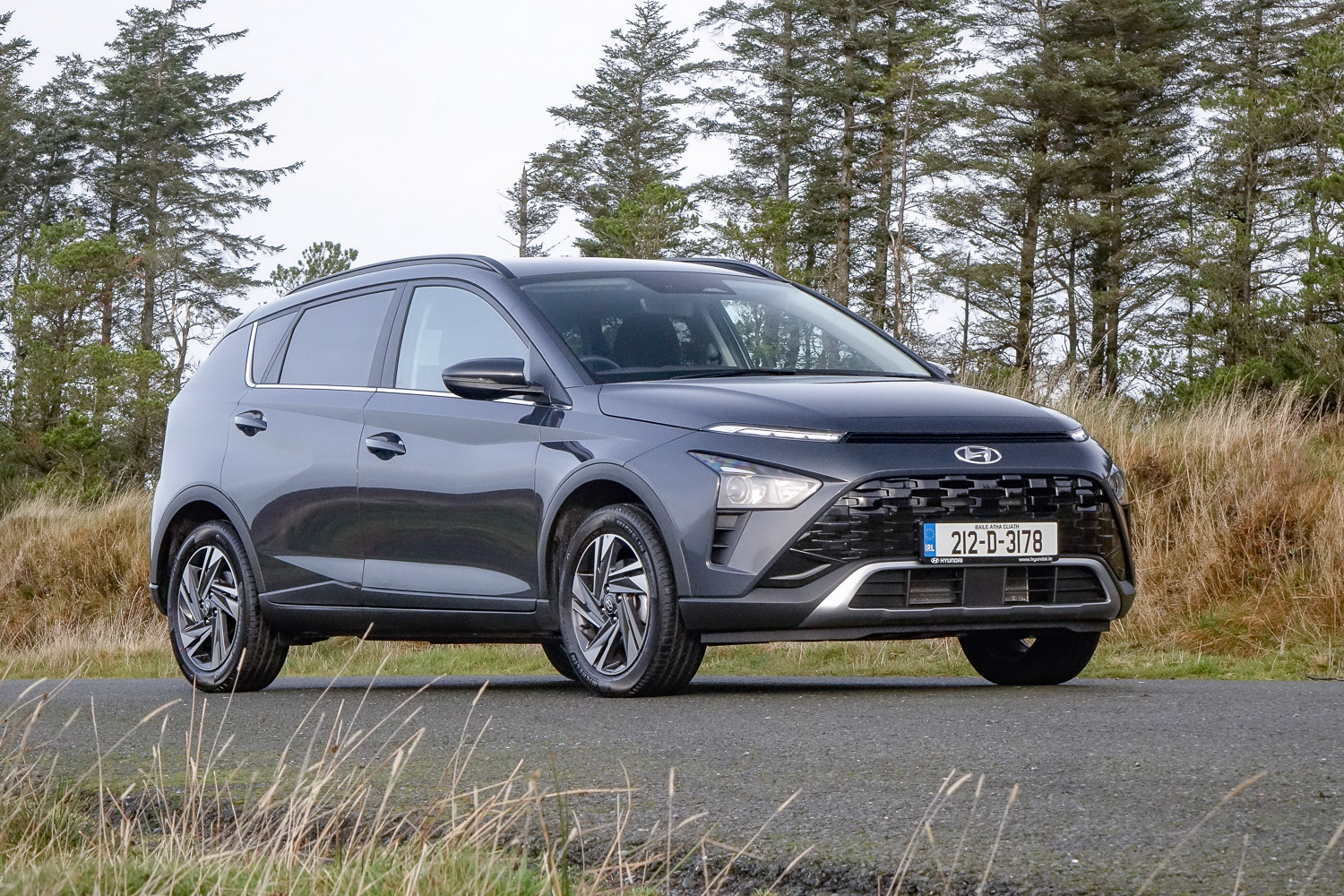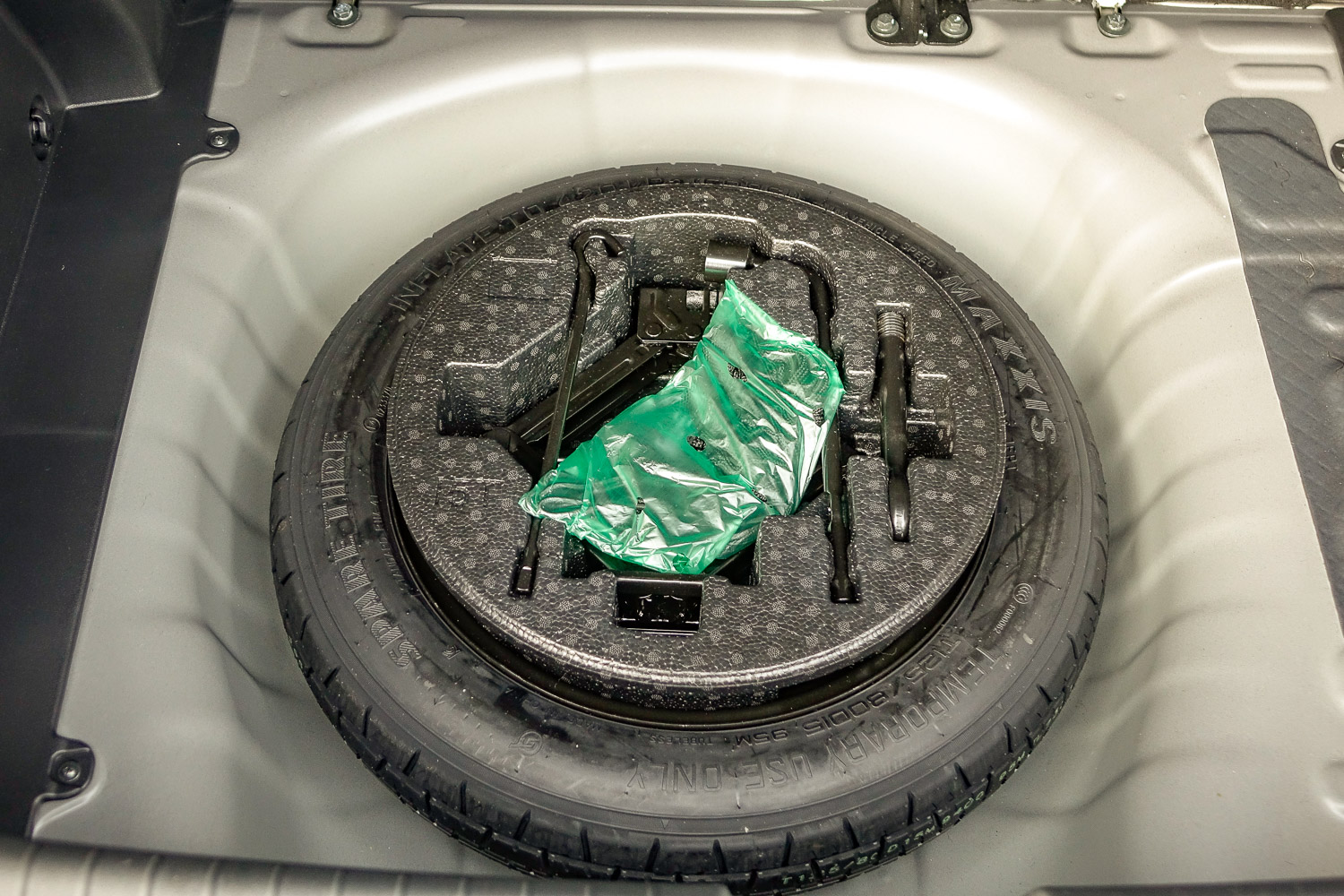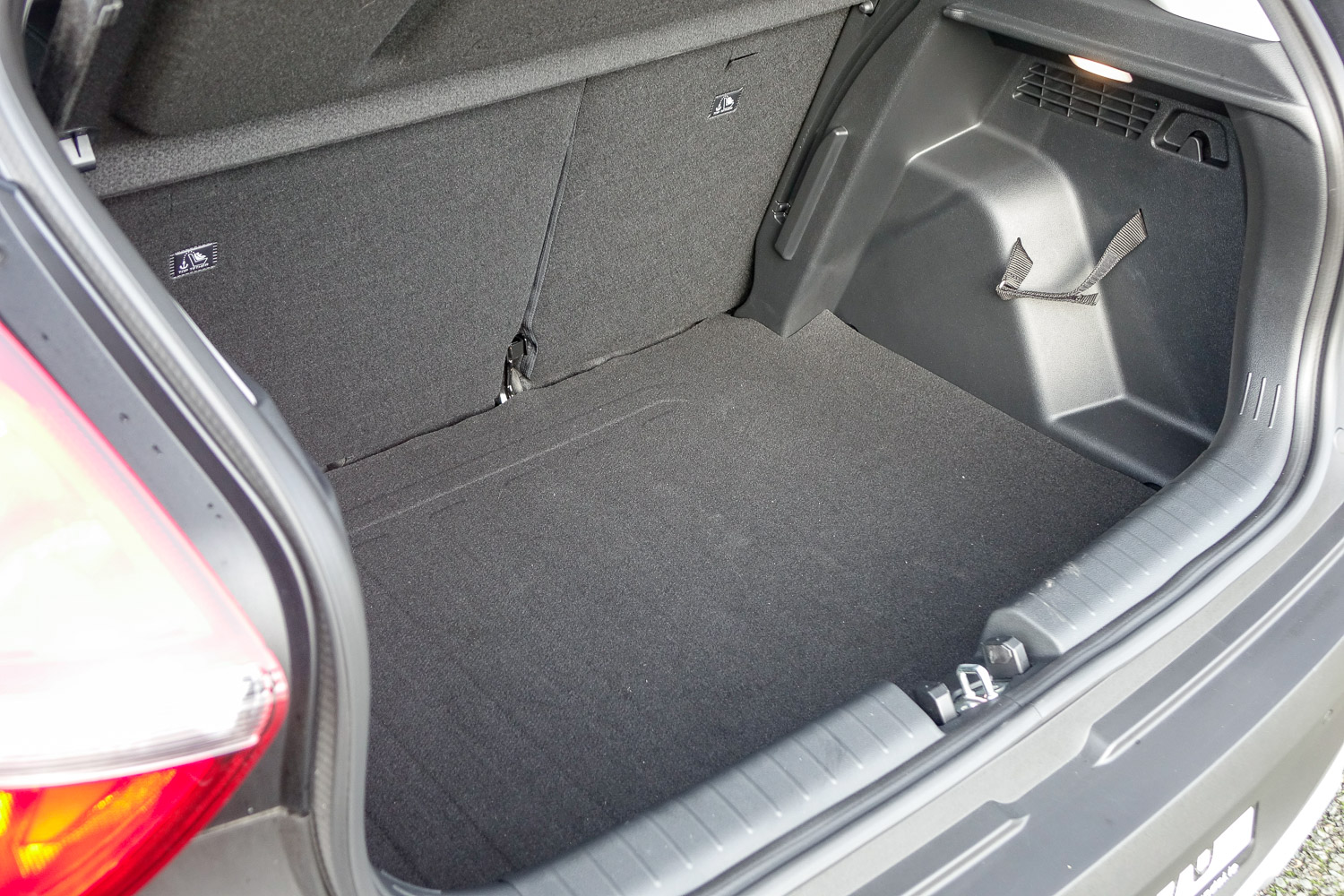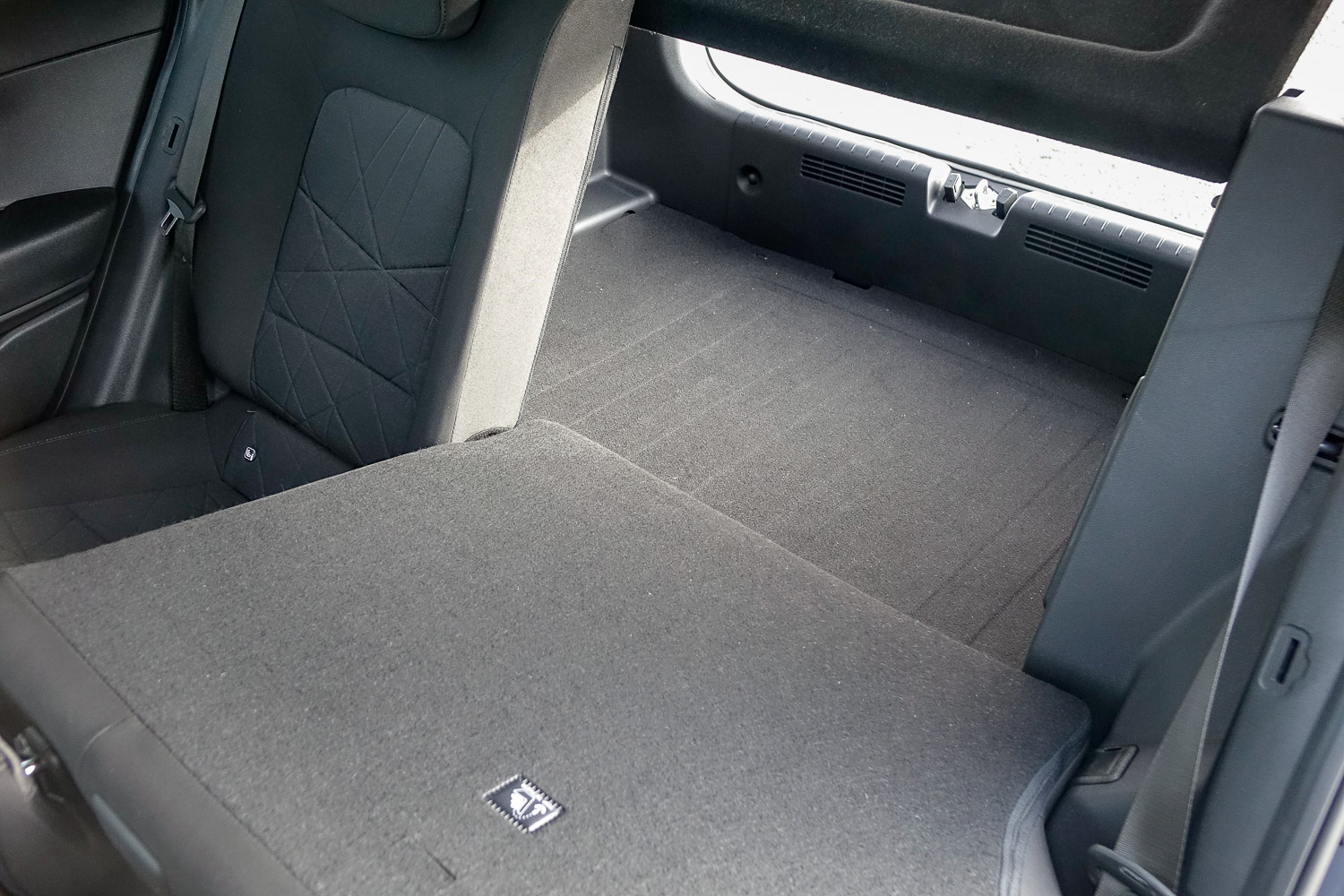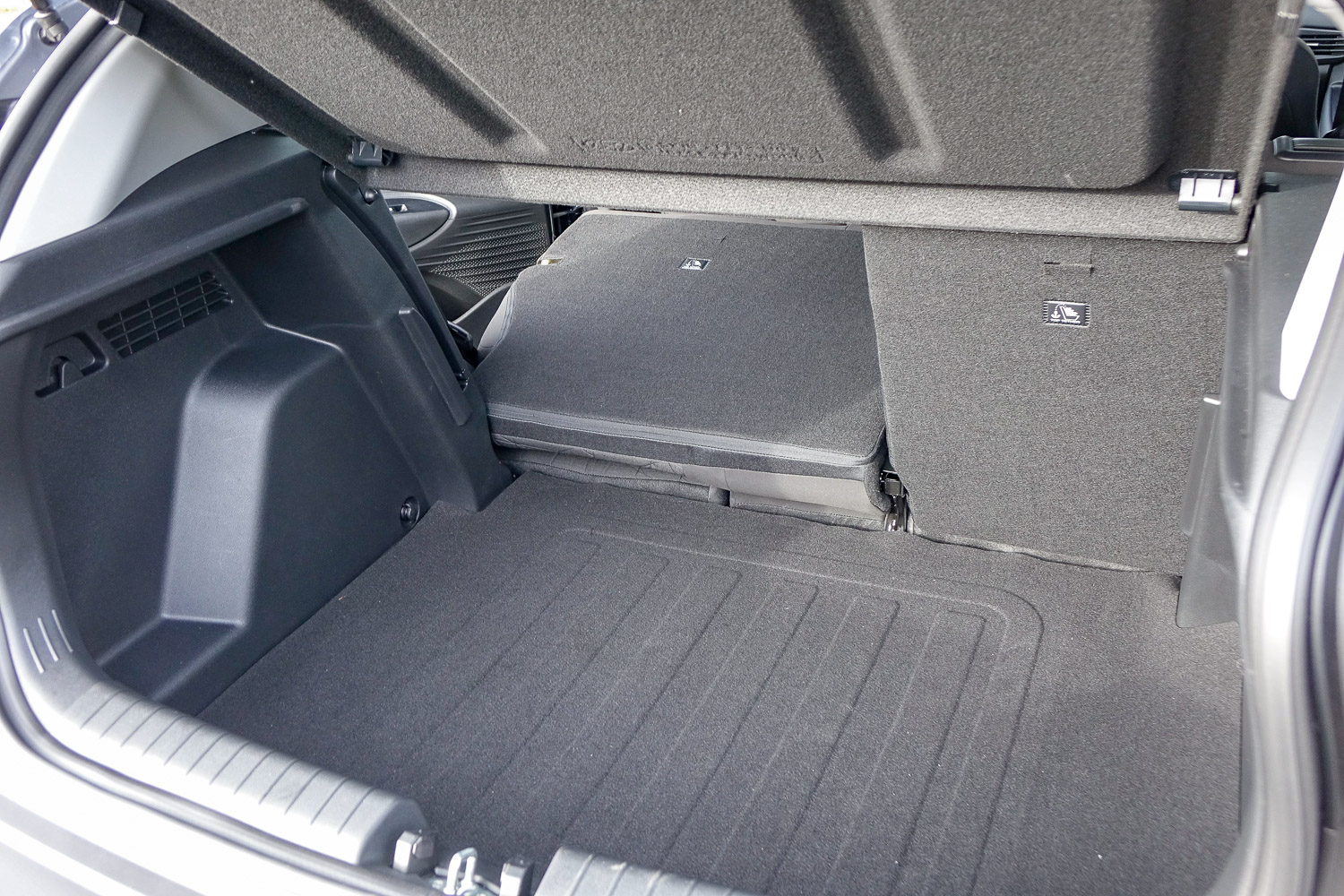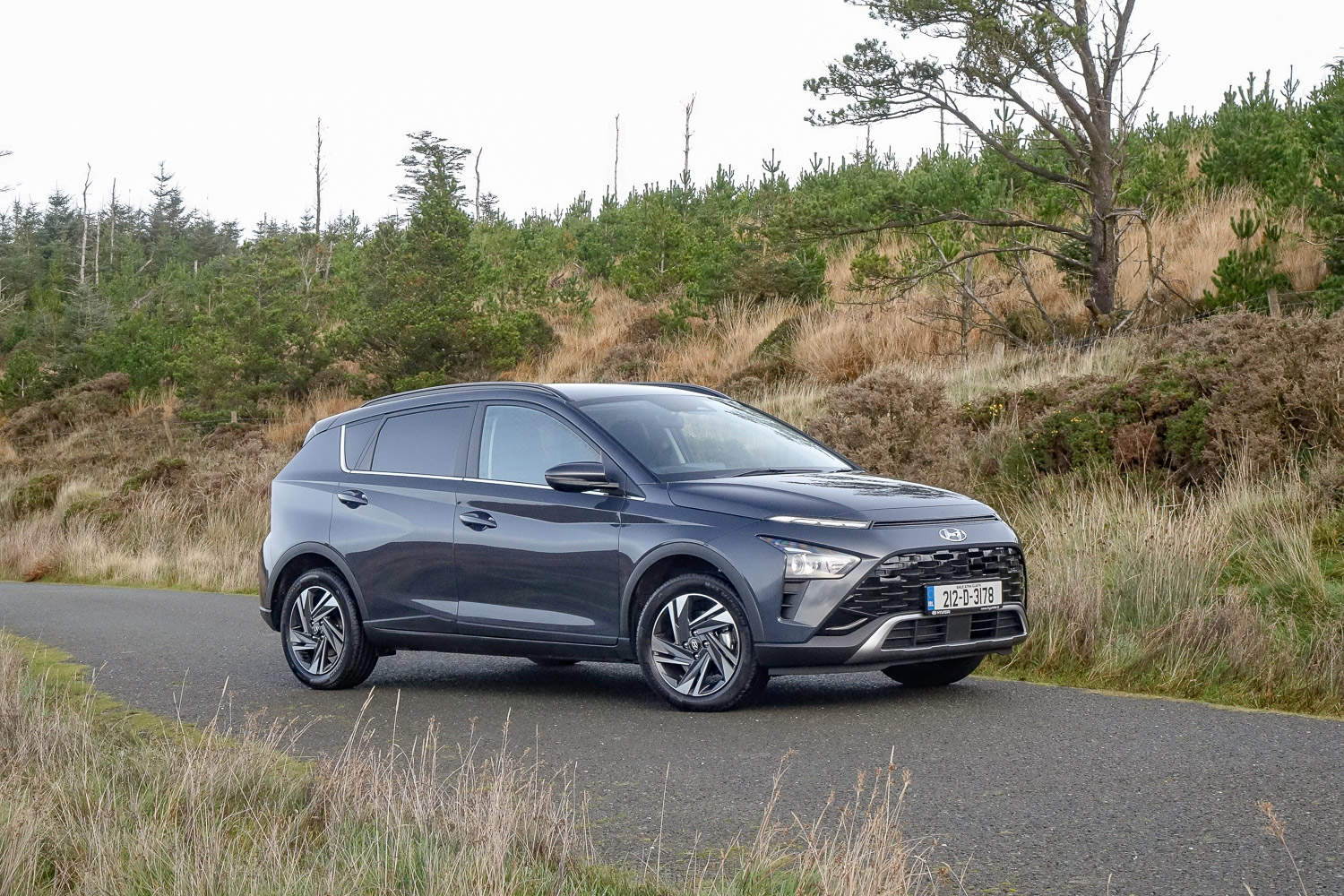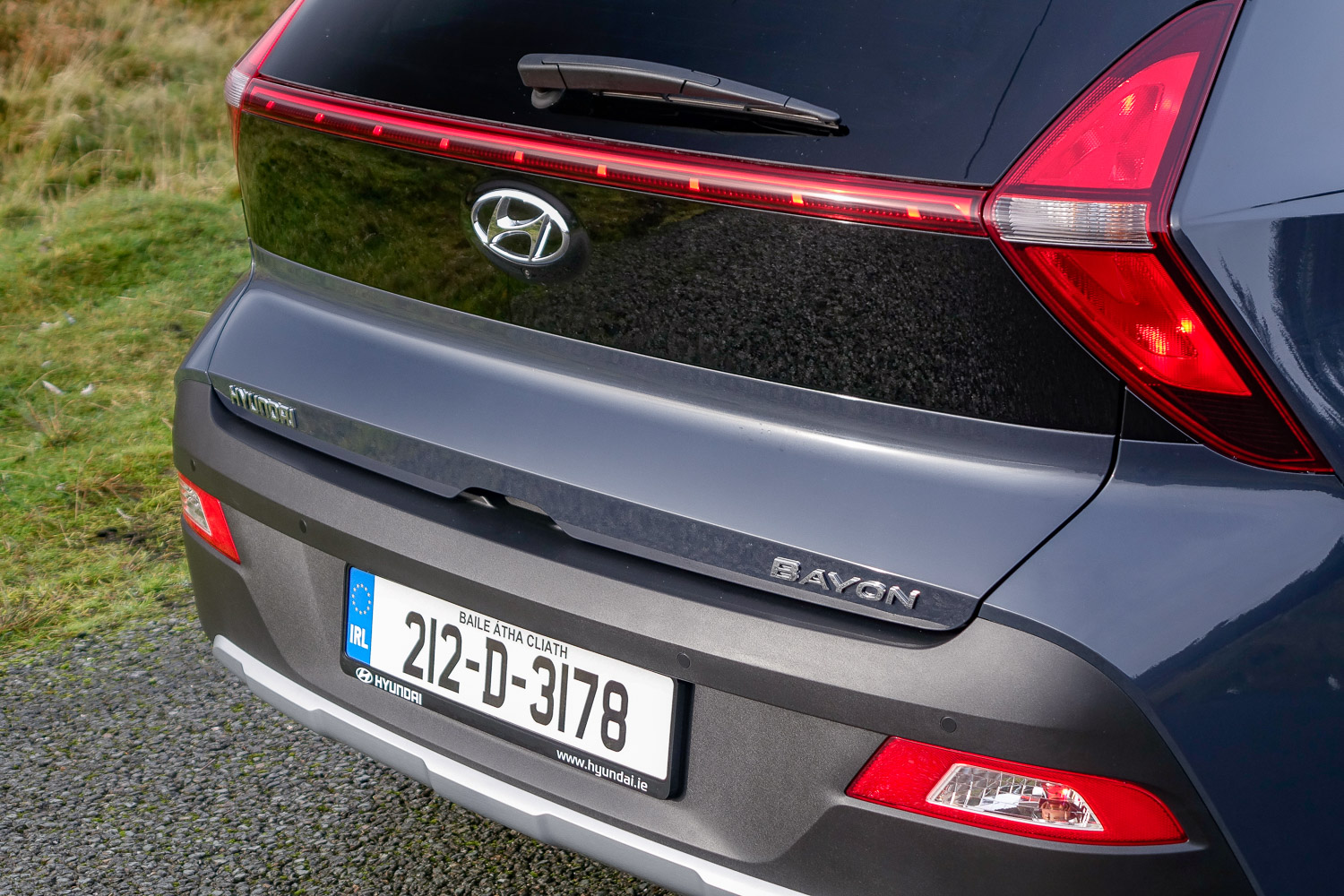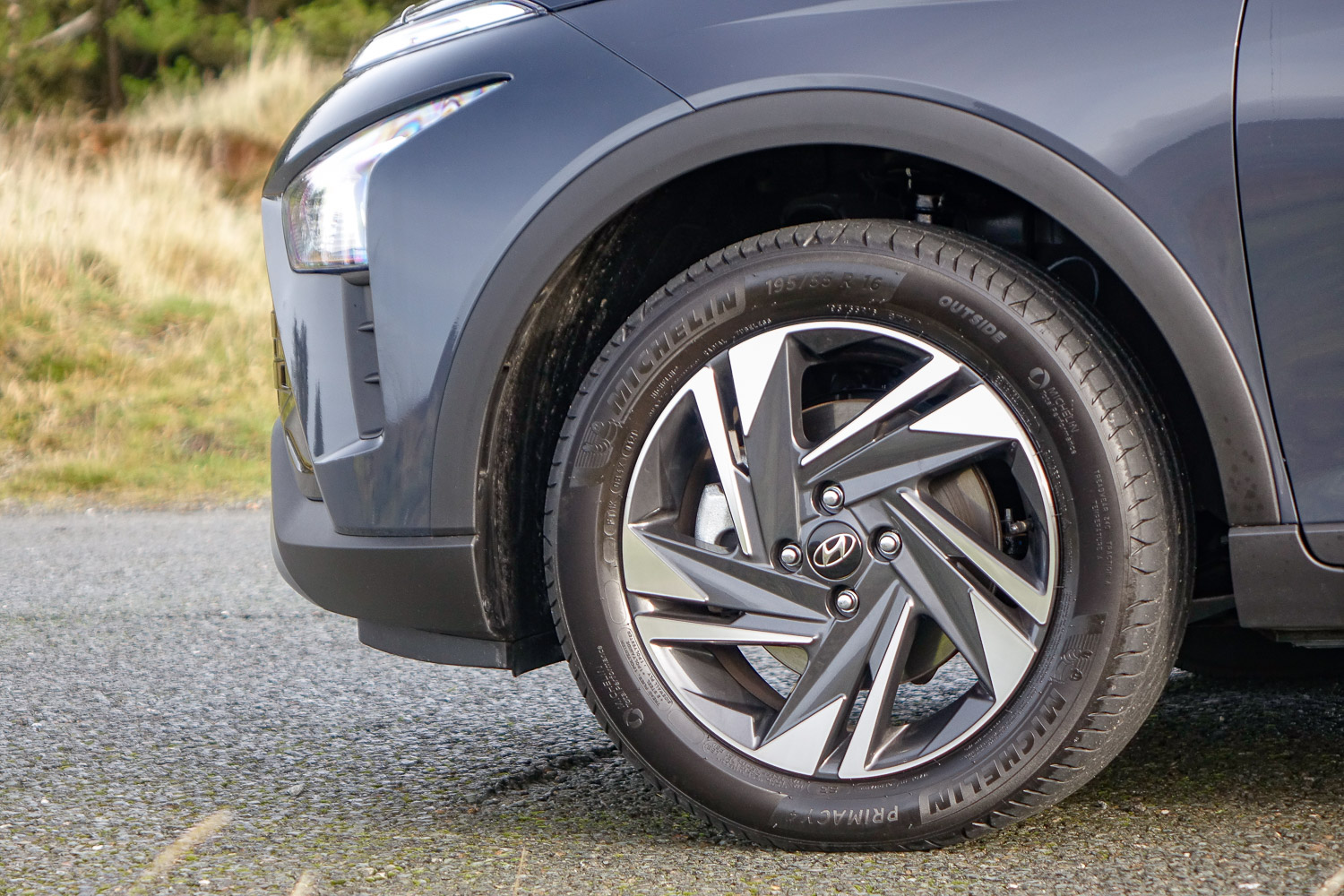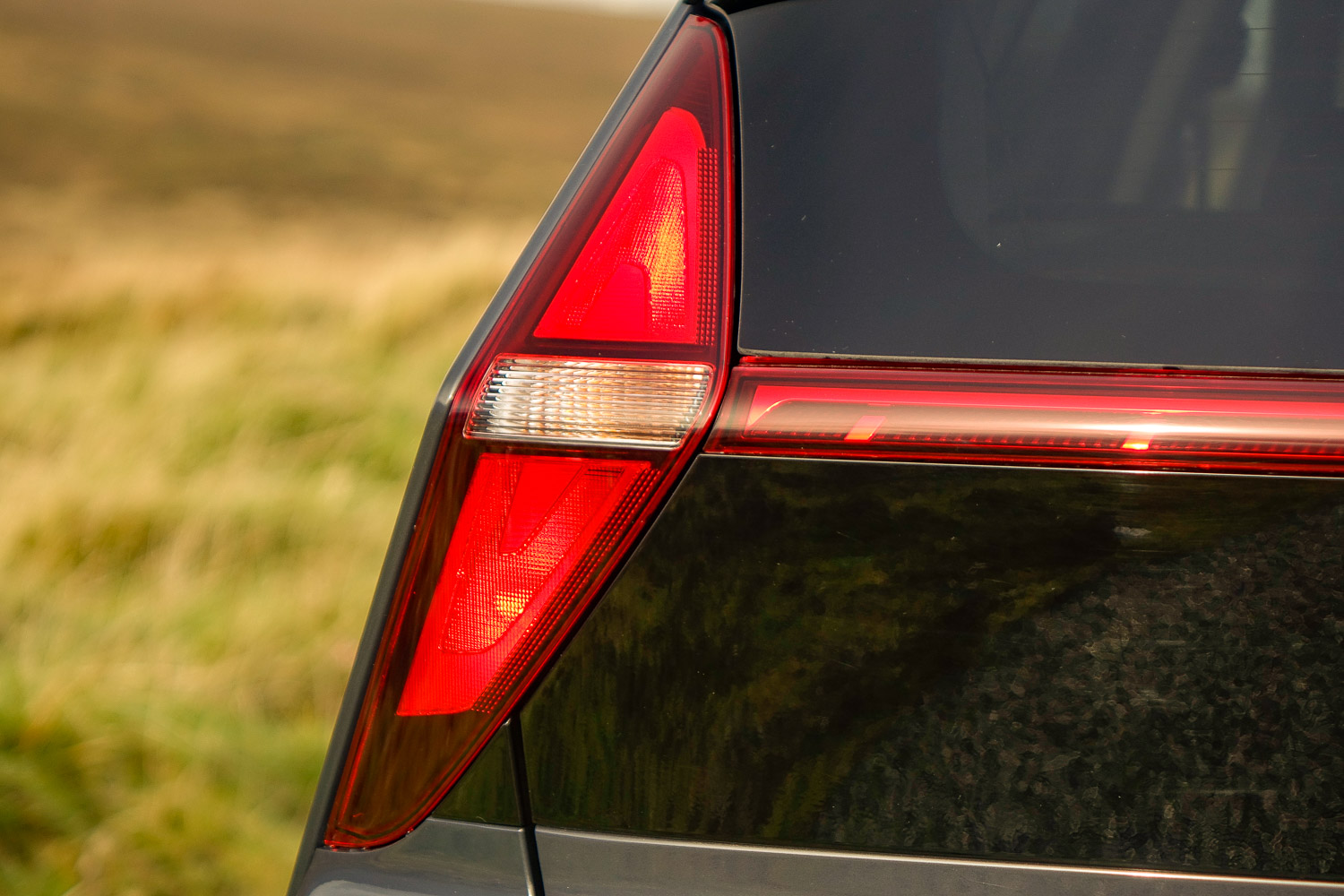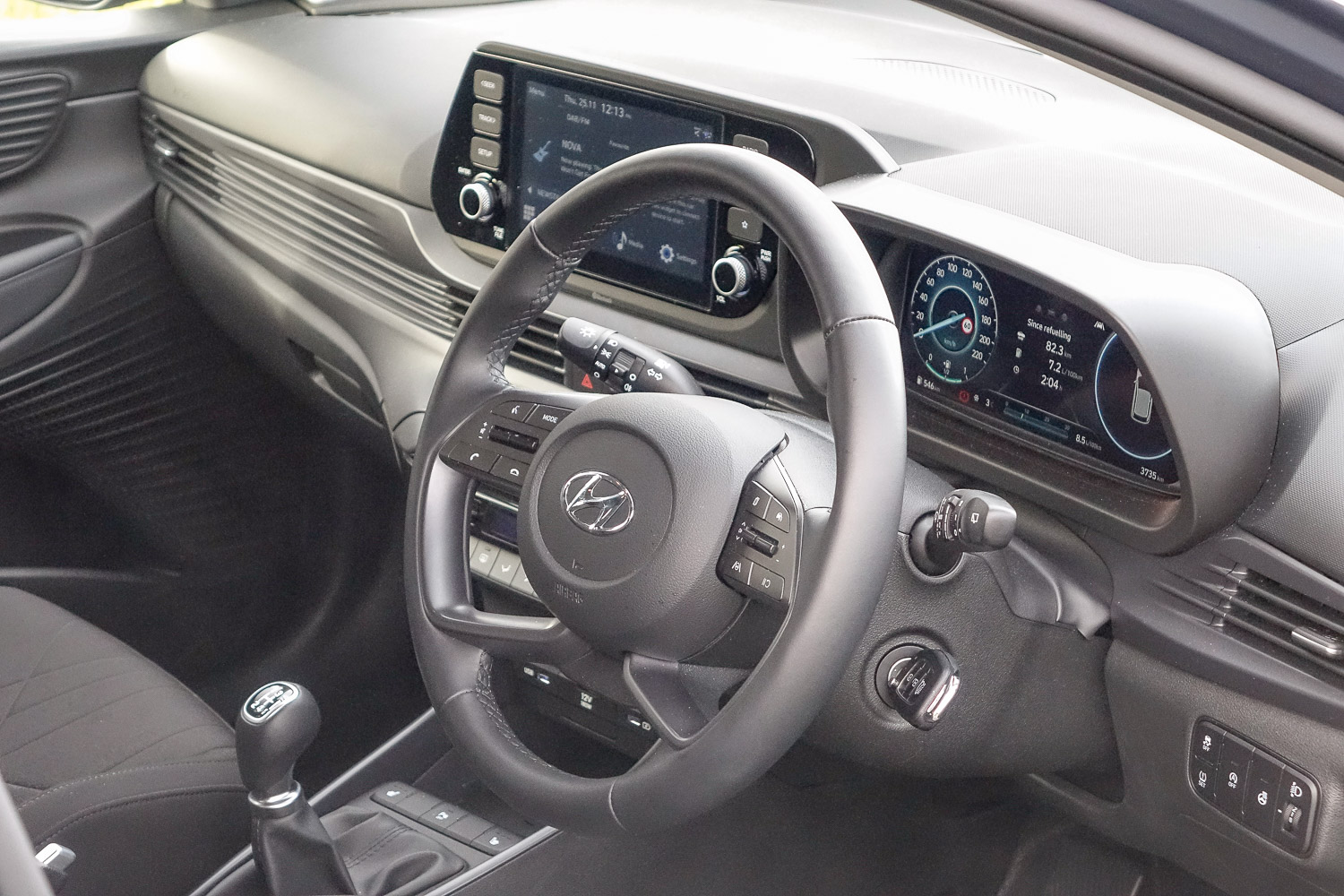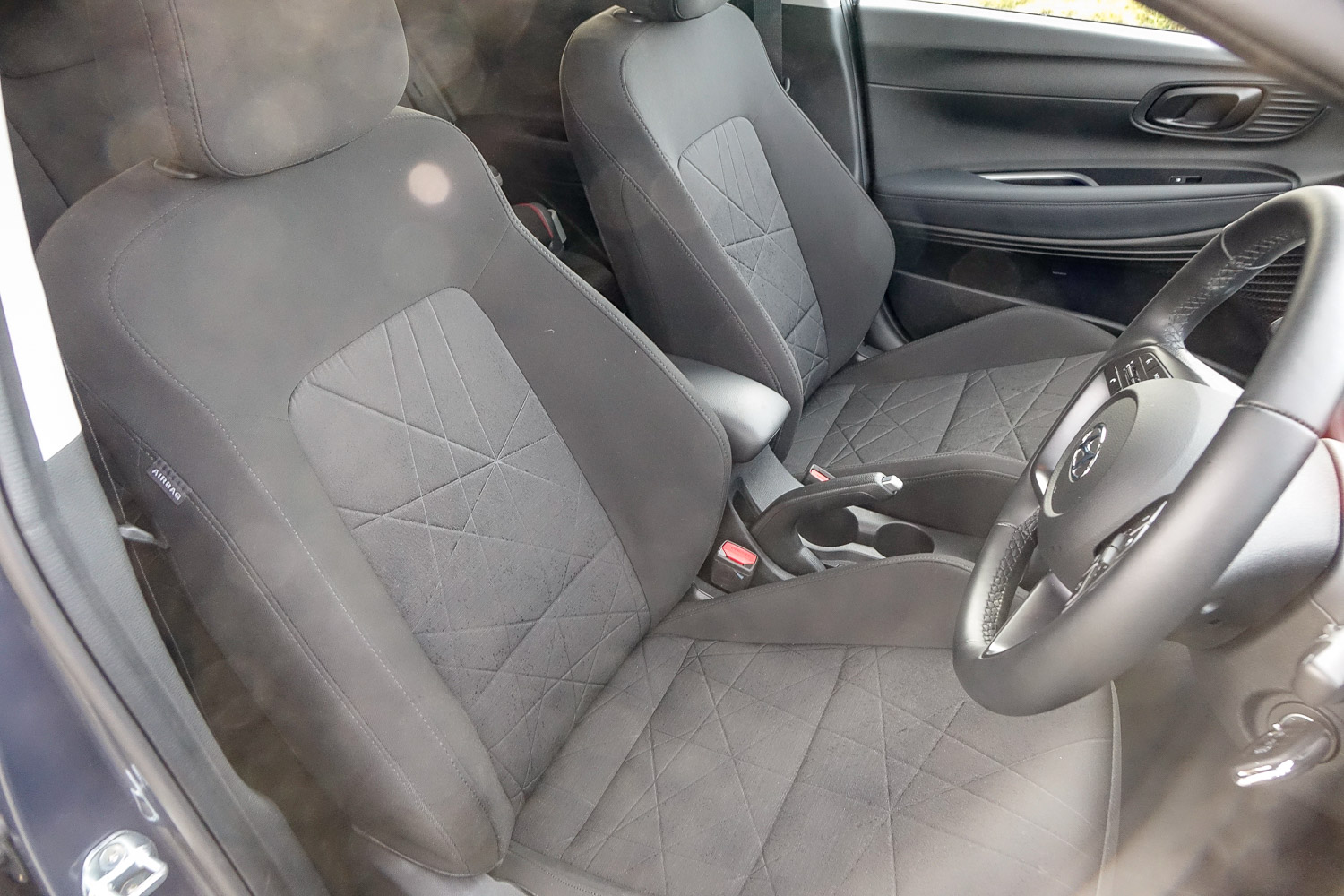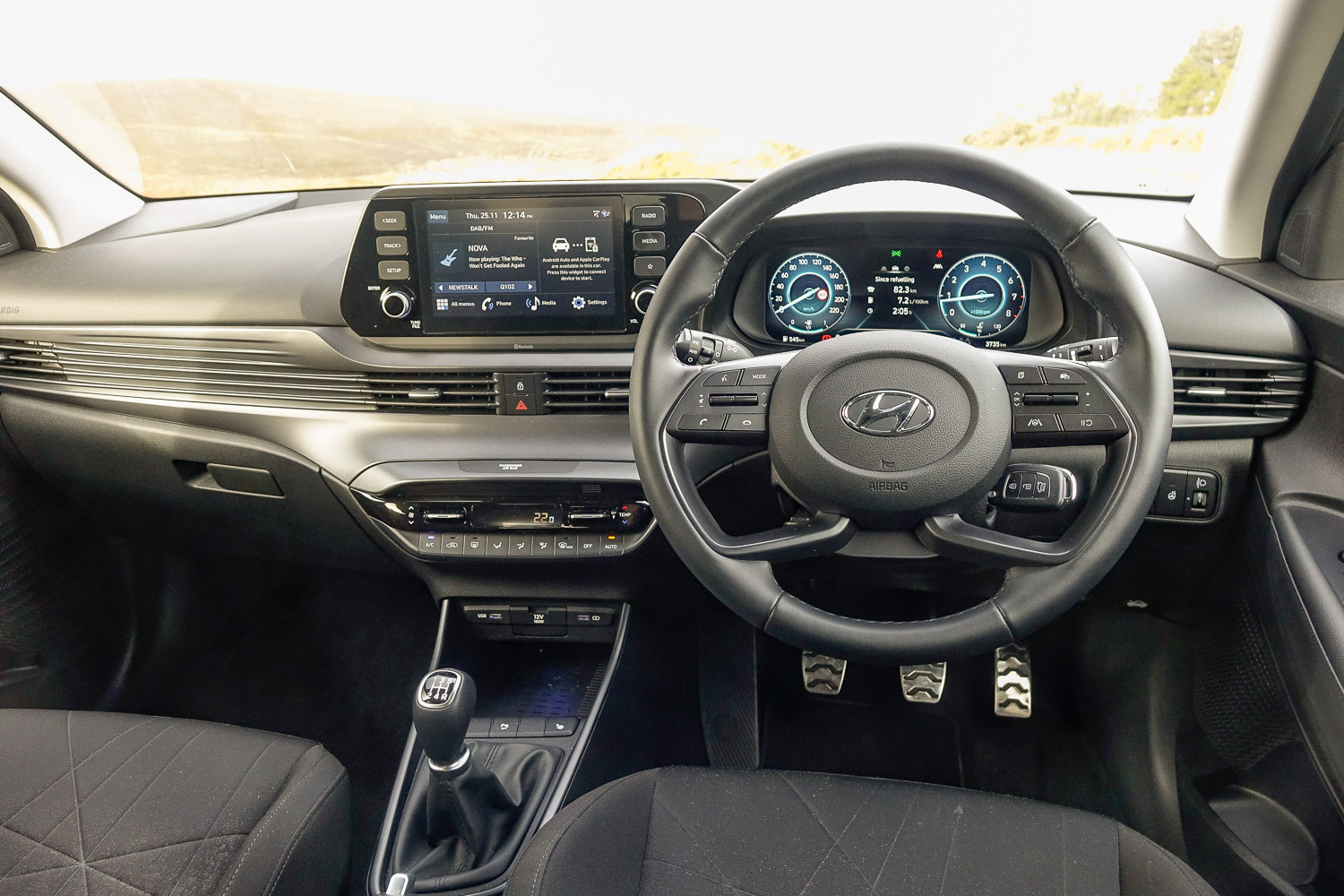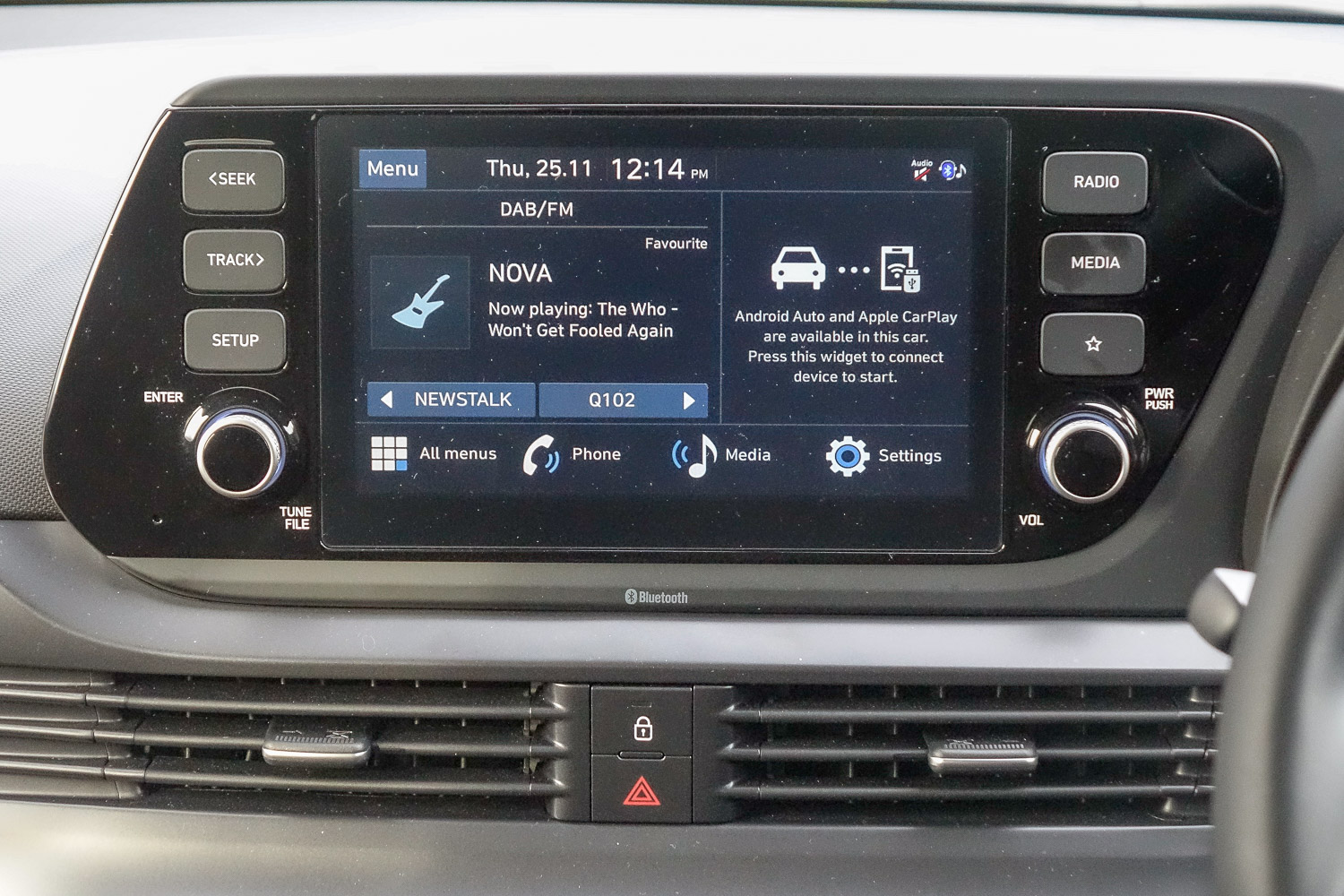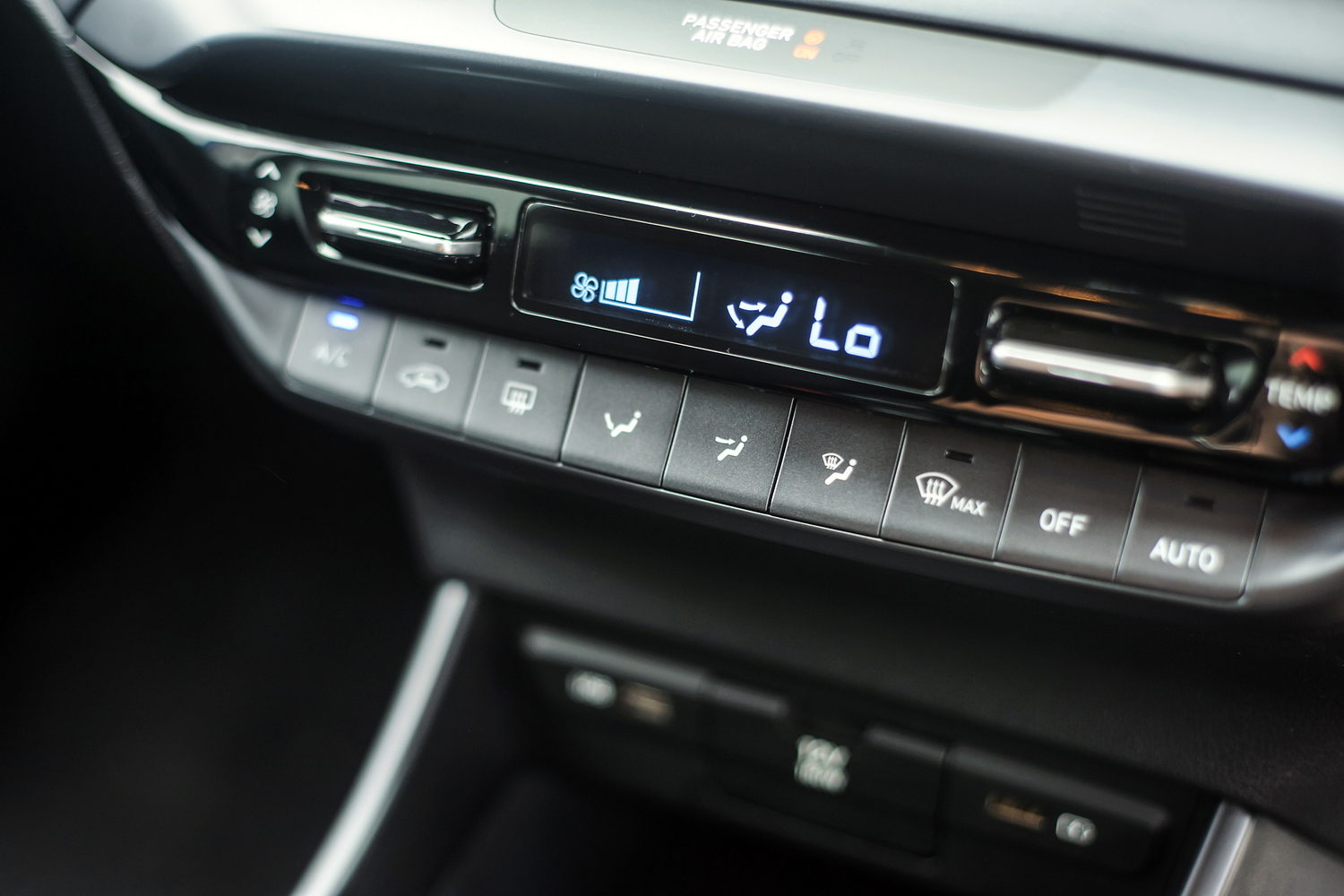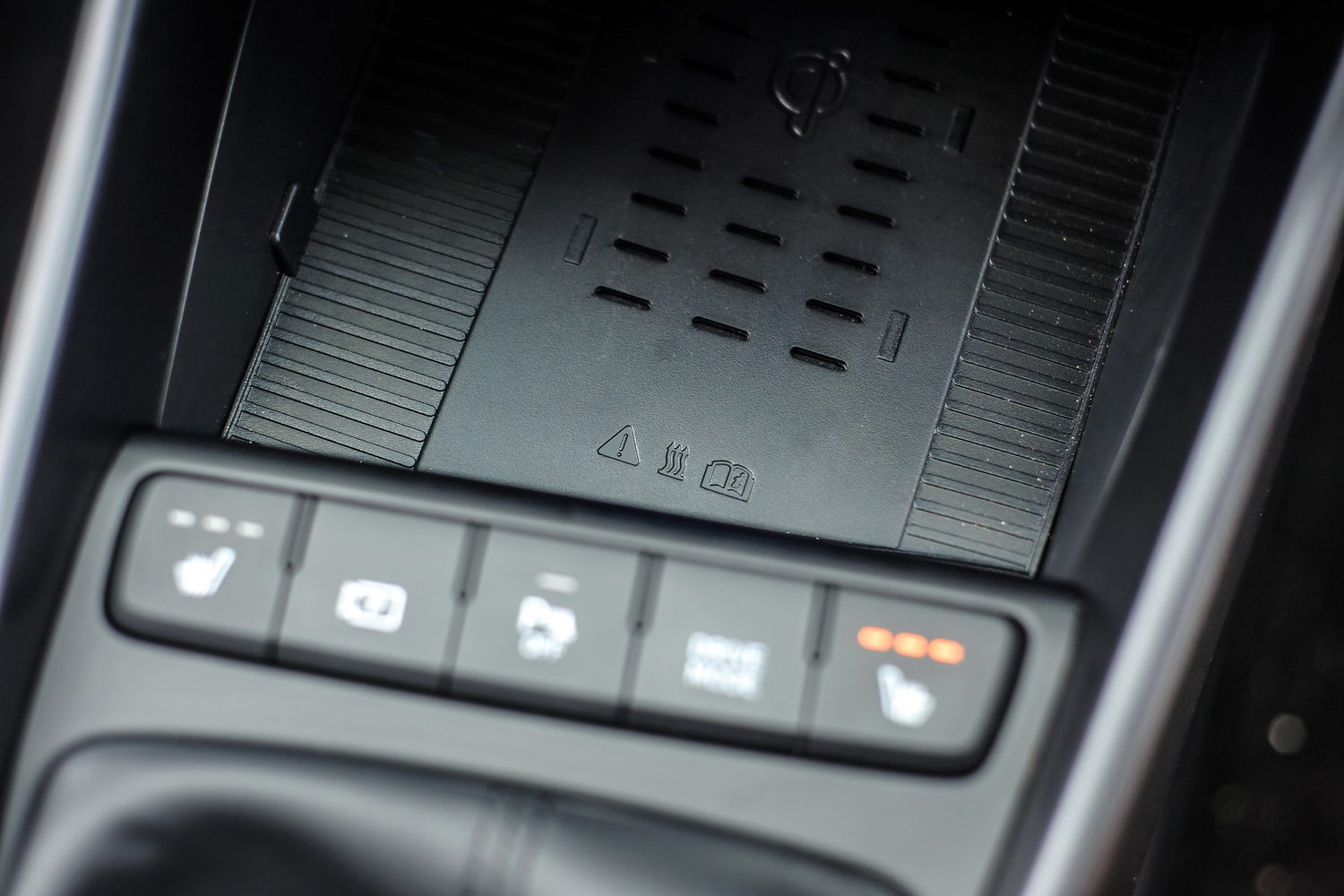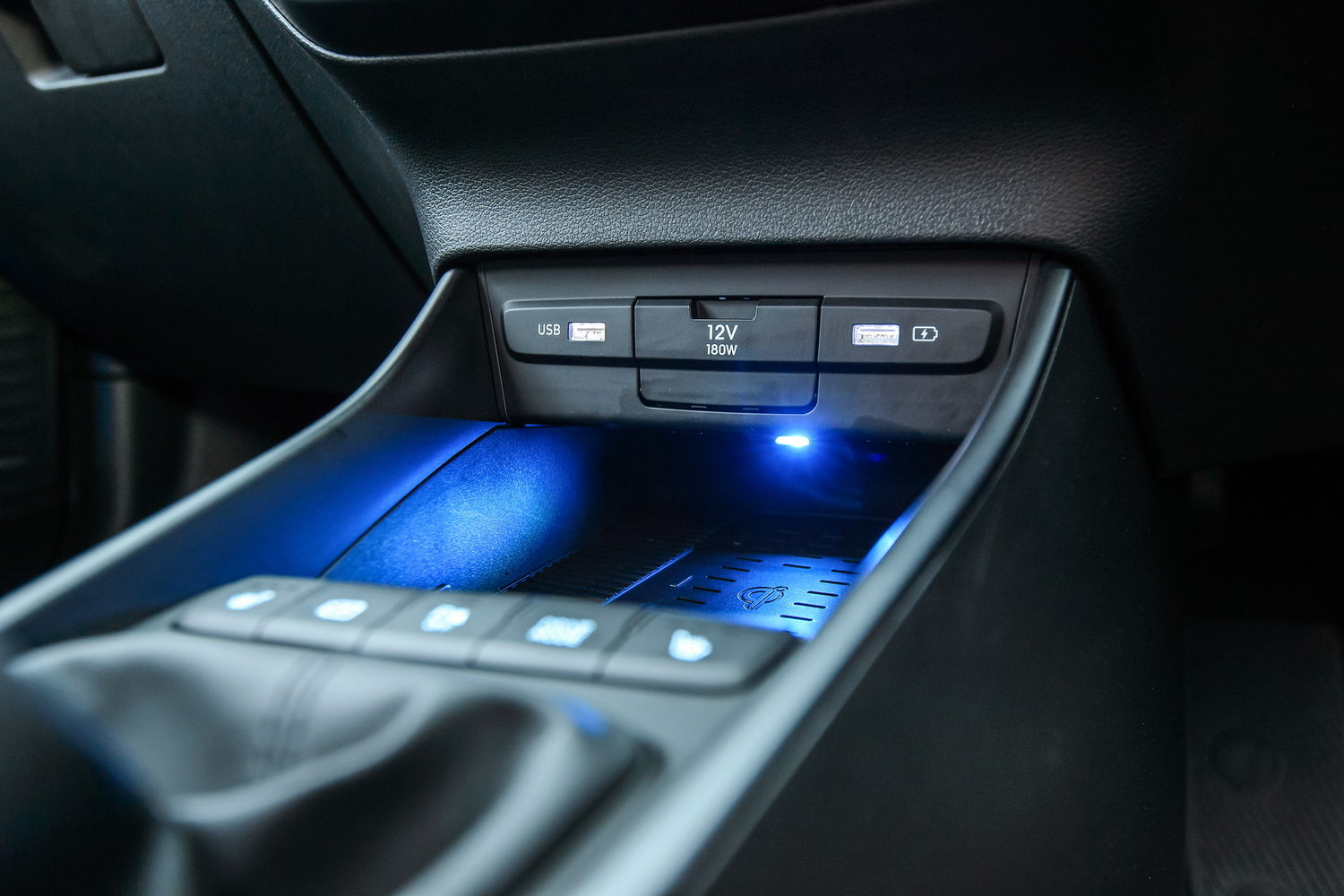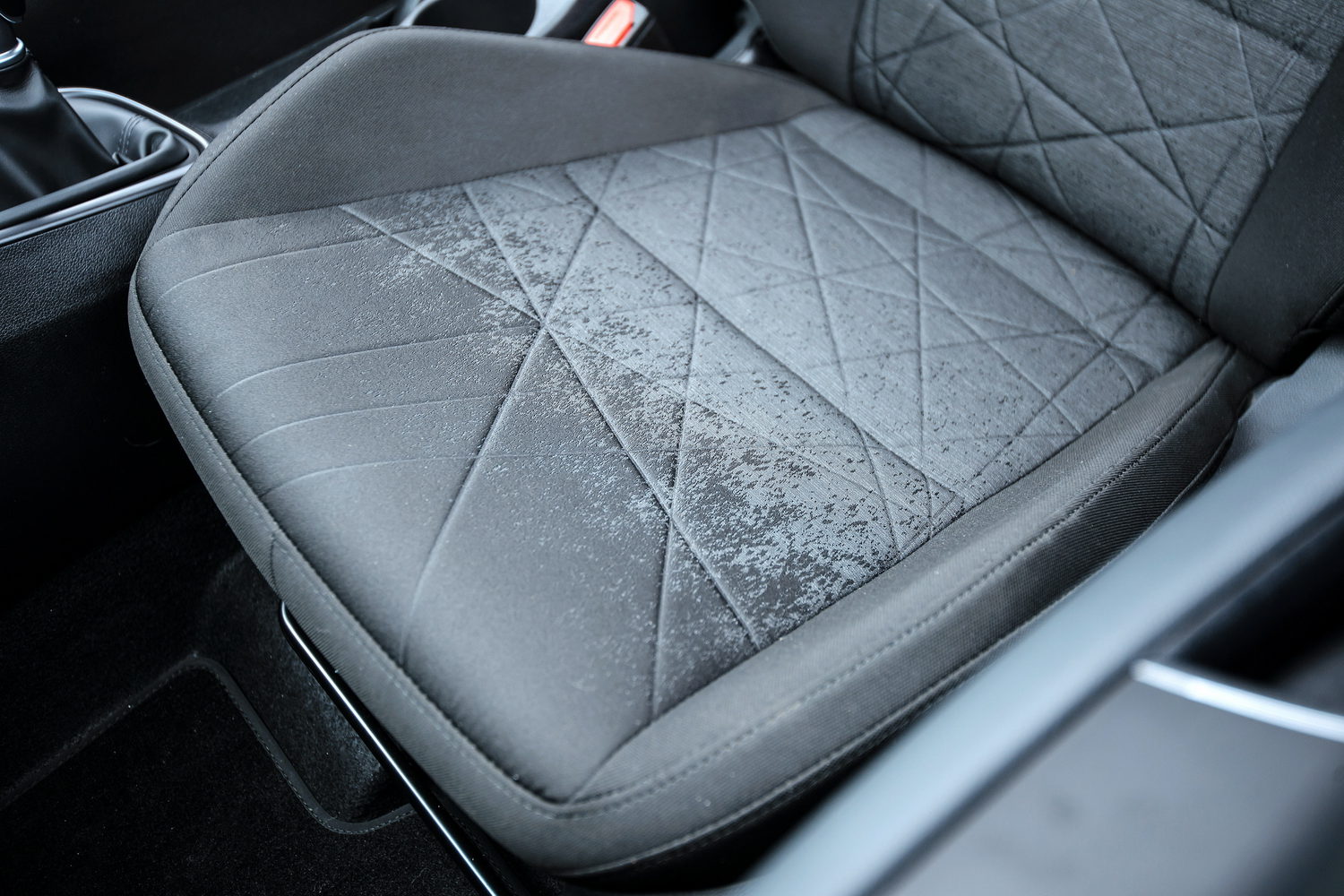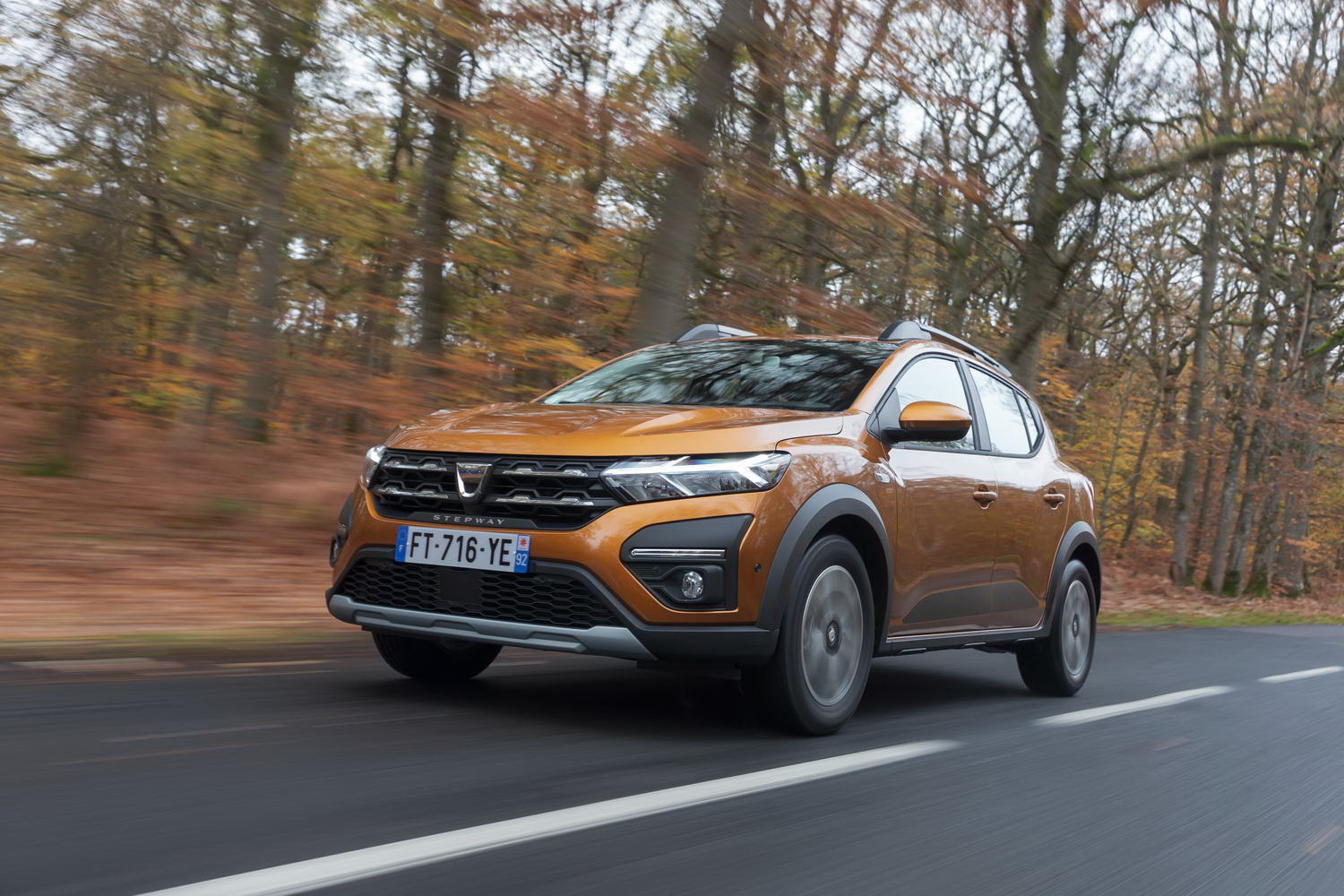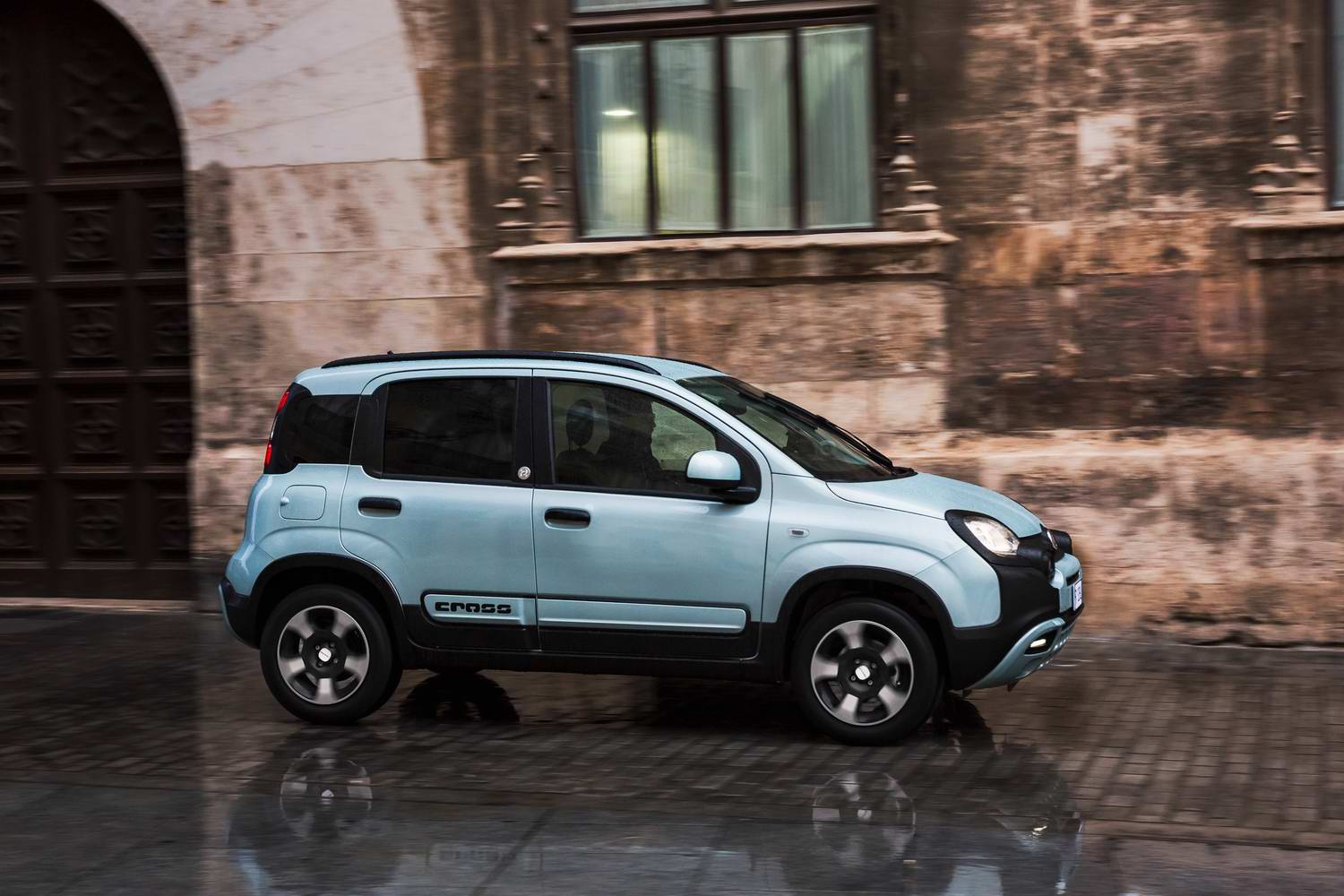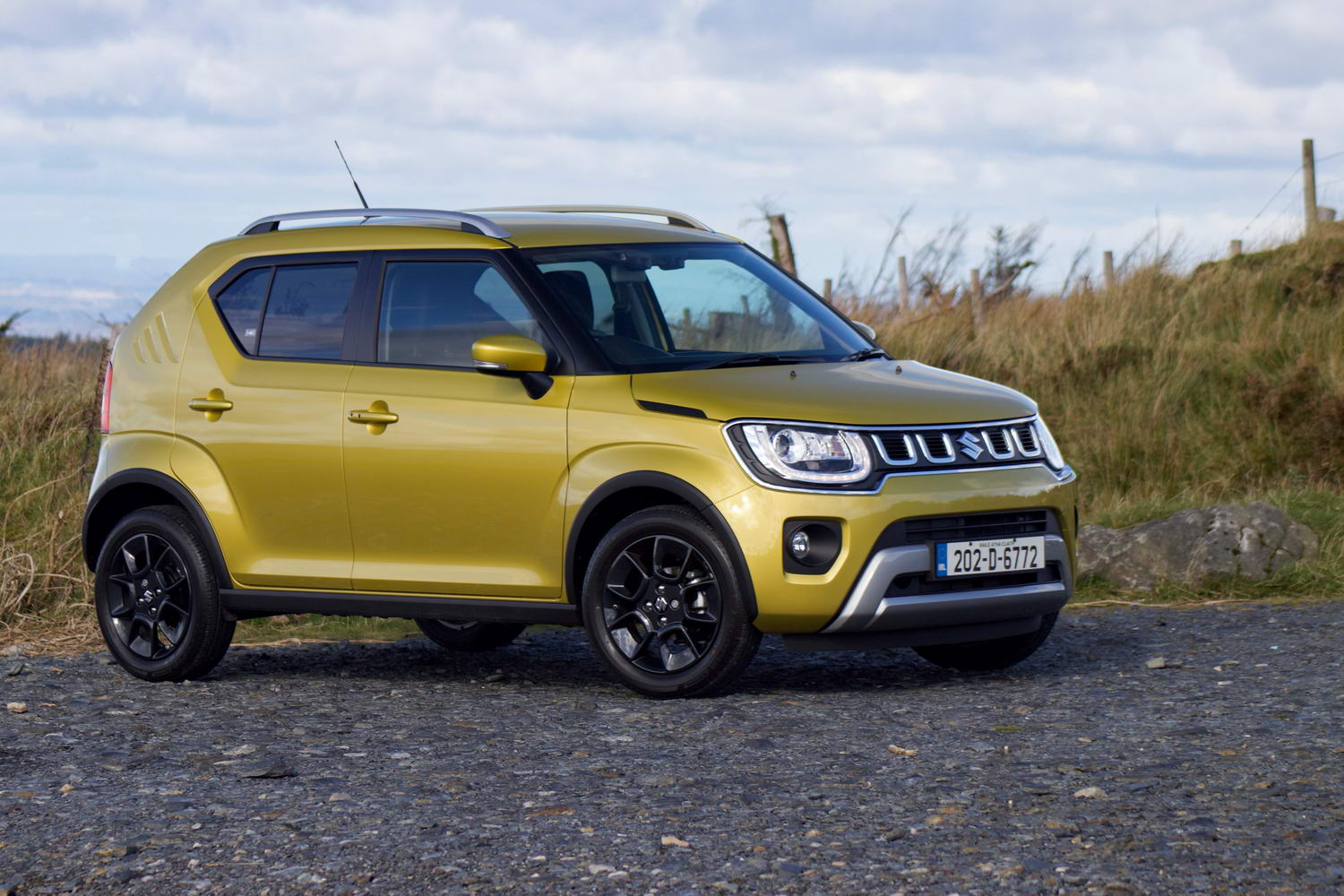Hyundai Bayon overview
One of the latest arrivals in the small SUV/crossover sector is the Hyundai Bayon. It's the fourth SUV (and we use that term loosely) in Hyundai's line-up, and slots in beneath the Kona in the range, while under the skin the Bayon shares its technology and running gear with the i20 supermini. Its main rivals are models such as the closely related Kia Stonic, plus the Citroen C3 Aircross, Renault Captur and Toyota Yaris Cross, although the Bayon is cheaper than most of those to buy and its proportions mean it looks more like a high-riding supermini than a small SUV - and our test car barely looked like a crossover with its wheel and paint combo.
The Bayon 1.2 Executive we're driving here is the top-spec of the range in Ireland, and comes with a five-speed manual gearbox and front-wheel drive. In line with many small SUV rivals, there's no four-wheel-drive option.
The Hyundai Bayon model range
Irish pricing for the Hyundai Bayon starts at €21,045 for the 1.2 Comfort Plus, while the higher-spec Executive trim is €2,000 extra with the same engine. If you want an automatic gearbox, then you get Hyundai's excellent 1.0 T-GDi turbocharged petrol three-cylinder unit. This only comes in Executive trim and costs €26,045. The only other variation offered is two-tone paint, which can be added to Executive models for €600 extra.
Standard equipment on Comfort SE includes 15-inch steel wheels with plastic trims, roof rails, a leather-trimmed steering wheel and gear lever, air conditioning, auto lights, electrically adjustable and heated door mirrors, LED daytime running lights, Bluetooth, cruise control, forward collision avoidance and lane-keep assist.
Upgrade to Executive trim and 16-inch alloys are added, along with body-coloured bumpers. Inside the equipment list is ramped up with a heated steering wheel and front seats, climate control, heated door mirrors, auto lights, ambient cabin lighting, remote central locking, an eight-inch touchscreen infotainment system with Apple CarPlay and Android Auto, 10.25-inch digital instruments, USB ports and wireless smartphone charging, rear parking sensors and a reversing camera, too.
Hyundai is offering 5.9 per cent APR finance on the Bayon, with monthly repayments on a 37-month contract from €204 a month. However, do visit the Hyundai Ireland website for the latest offers.
The Hyundai Bayon interior
The Bayon is based on the same running gear and technology as the i20 supermini (it even has the same width and wheelbase), and as a result it feels remarkably similar to its sibling, but on the whole that's a good thing. The cabin design means that while there are hard plastics, the assorted streaks and textures of the mouldings hide it well, and build quality is first rate.
Wide-opening doors (including the rears) boost cabin access, and since the Bayon is based on the i20 - one of the roomiest superminis for sale - there's a decent amount of space inside. The only real difference between the two is that the Bayon has a slightly higher seating position.
The dashboard layout is easy to get along with, and the Bayon gets a more modern climate control system than the i20, with a digital system instead of rotary dials. The digital dashboard has multiple settings for different views and, while the touchscreen on the centre console is a relatively modest eight inches in size, it works well.
All models get fabric seat upholstery, and this Executive trim features heated seats as standard. However, the seats themselves aren't the most supportive, and they have a slightly flimsy feel when it comes to adjusting them.
Further back, rear seat space is good for two, but will be a bit of a squeeze for three, while two pairs of ISOFIX points are fitted as standard. The boot is acceptable, rather than outstanding, because it offers more space than the i20's boot, but isn't that competitive with class rivals. There's 334 litres on offer with the seats up (compared with 262 litres for the i20), and 1,205 litres with them folded, although with the seats down there's a step in the floor. Some rivals, such as the Renault Captur, offer a sliding rear bench so they can deliver even more space. The Bayon also has a high load lip and a low boot floor, so loading heavier items will be harder.
The Hyundai Bayon driving experience
A slightly raised seat height means that drivers of the Bayon have a clearer view of the road ahead than those in the i20, but while visibility is good, this is one of the lower-slung small SUVs for sale - it feels more like a supermini than a crossover.
The controls are all light and easy to use. The steering is light enough to twirl easily at low speeds, and there's even some feedback about what the front wheels are doing when on the move, too. The gearshift is light and is complemented by a light clutch pedal, so you'll have no complaints about how easy the Bayon is to drive.
But what the Bayon could really do with is a six-speed gearbox instead of the five-speeder that's fitted. The gears are widely spaced, so it's difficult to make the most of the modest power that's available. At low revs, the four-cylinder engine is quiet, so it's fairly pleasant around town, but you need to work it if you want to make any progress. Hit 100km/h on the motorway and the engine is turning at 3,500rpm, which harms refinement somewhat, while fuel economy will also take a hit - we saw around 8.0 litres/100km during our time with the car.
Hyundai is proud of the Bayon's safety systems, but the car's lane assist system is too sensitive. It's over-keen to keep the car in its lane, with acoustic and visual alerts before the electronics intervene to steer the car back into line.
Our verdict on the Hyundai Bayon
Overall the Hyundai Bayon is a decent small SUV, if not a class leader. Think if it more as a slightly higher-riding i20, and it makes sense. It's easy to drive, there's reasonable space inside (including a bigger boot than the i20's) and the Executive model is very well equipped.
However, rivals offer more of an SUV feel and with more practicality, too, while the Bayon's 1.2-litre engine feels underpowered. If we could get the more flexible 1.0 T-GDi engine with a six-speed manual gearbox (as is available in other countries) then the Bayon would be an even stronger contender in the class.

